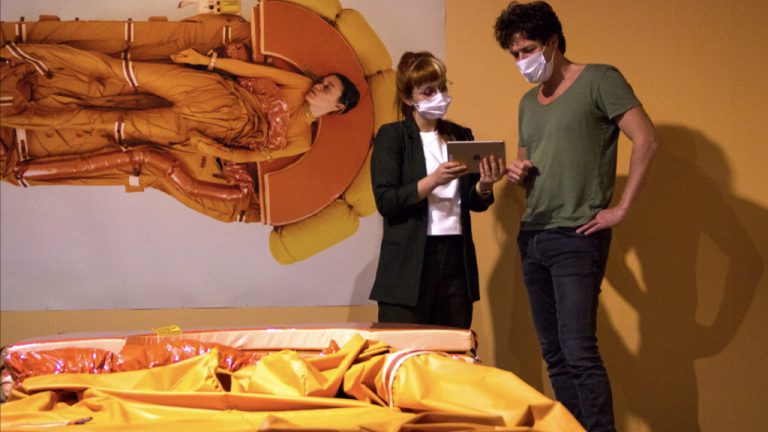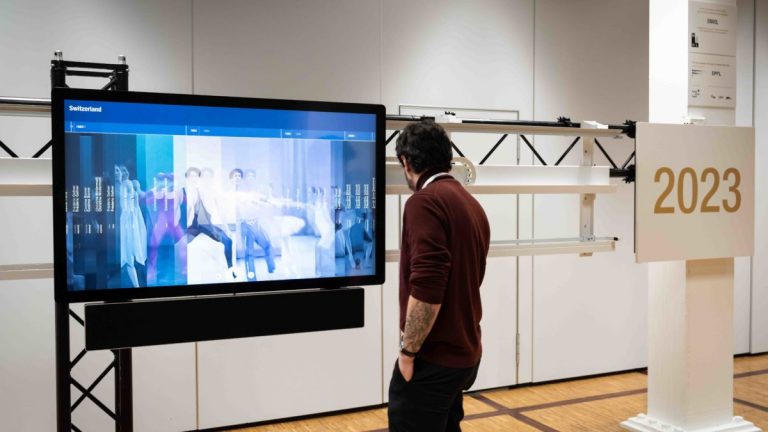
Dancing through Time – Prix de Lausanne
Dancing through Time is an interactive installation to explore the 50 years of the Prix de Lausanne. Developed by the Laboratory of Experimental Museology eM+ at EPFL, the installation provides a temporal journey through 1600 video sequences as witness to an extraordinary heritage and legacy of this formative event. Participants who engage with Dancing through Time discover and rediscover the seminal performances of the young dancers at the most pivotal point of their careers. The installation will be accessible freely all week long.
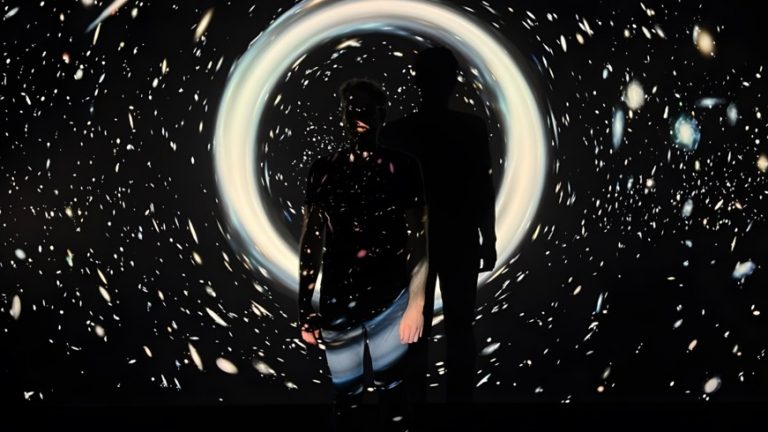
Le Temps – A l’EPFL, l’Univers à portée de main //At EPFL, the Universe at your fingertips
By Olga Yurkina, 30
Interactive et immersive, l’exposition «Cosmos Archaeology» munit le visiteur de lunettes 3D et autres iPad pour un voyage à des milliards d’années-lumière de la Terre, à travers les mystères du temps et de l’espace.
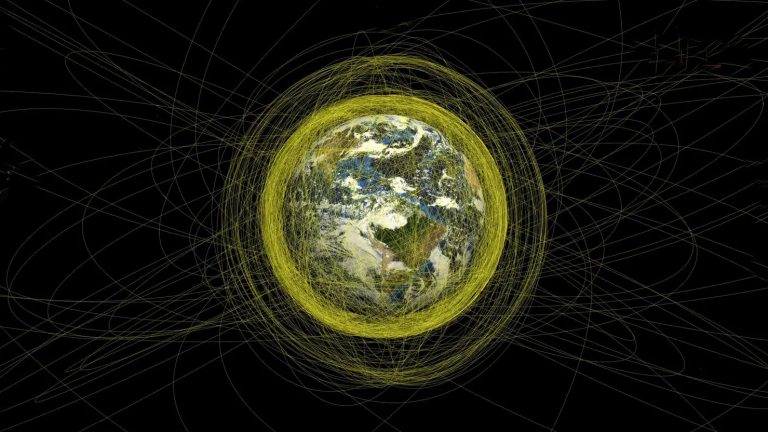
24 heures – Visite aux dimensions spatiales //Visit to spatial dimensions
L’exposition «Cosmos Archeology – Explorations in Time and Space» multiplie les incursions dans l’espace, proche ou lointain. Un voyage où l’on finit toujours par revenir sur Terre.
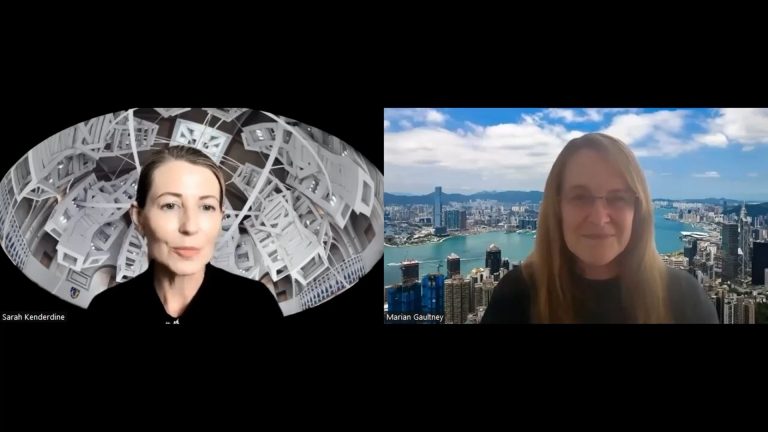
Sarah Kenderdine speaking about Asian Collaboration – EPFL Day of International Research 2022
EPFL Day of International Research 2022 – How to Navigate the Asian Collaboration Network
The EPFL Day of International Research took us around the globe via region-specific presentations and discussion panels: from Africa to Asia to North America and beyond. The event also brought together internal experts from EPFL’s Central Services to highlight support offered on all the practical aspects of organizing international projects and consortia.
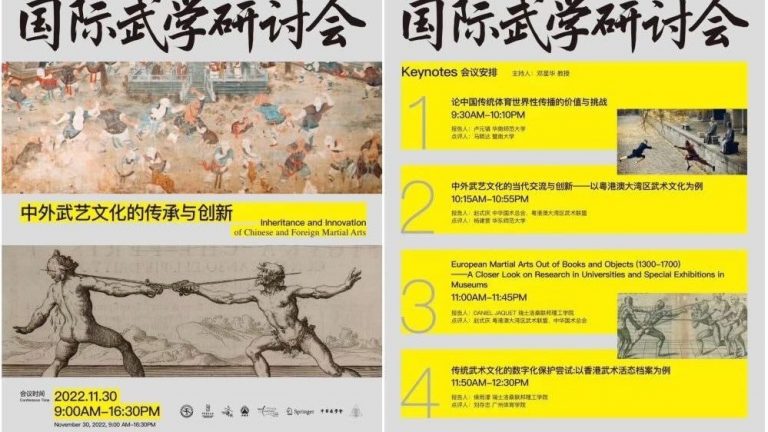
eM+ researchers presenting at the 4th International Martial Studies Conference
Daniel Jaquet and Yumeng Hou are invited speakers and panellists at the 4th International Martial Studies Conference, organised by School of Physical Education and Sports Science, South China Normal University, and International Guoshu Association.
Daniel Jaquet – “European martial arts out of books and objects (1300-1700): A closer look on research in universities and special exhibitions in museums”.
Yumeng Hou – “Towards digital preservation of traditional martial arts: the HKMALA approach”
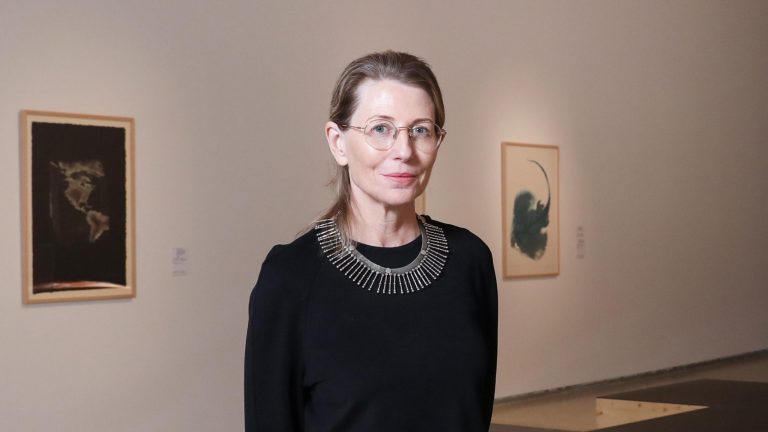
Sarah Kenderdine named in the Blooloop Museum Influencer List 2022 – The Power 10
Professor Sarah Kenderdine, director of EFPL’s Laboratory for Experimental Museology (eM+), is named in the Museum Influencer List 2022 – The Power 10 by Blooloop. “Kenderdine is considered a pioneer in the fields of digital heritage and digital museology, and is a regular keynote speaker at related forums internationally, including the World Economic Forum (WEF).”
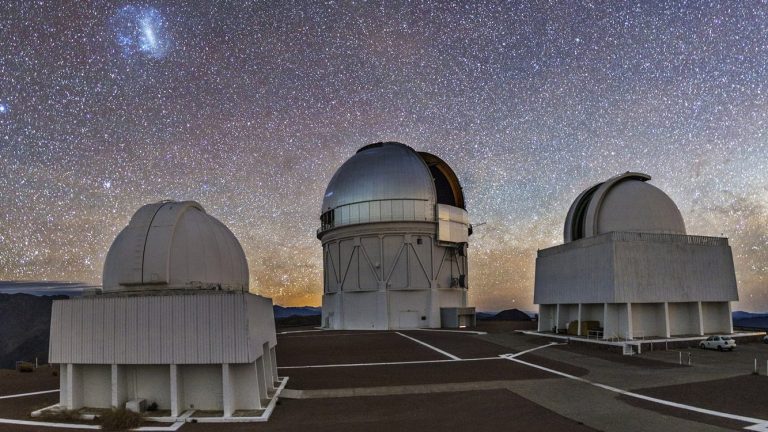
CQFD – RTS.ch | Une exploration dans le temps et dans l’espace //An exploration in time and space
Lucia Sillig takes you to the EPFL to discover Cosmos Archaeology: Explorations in Time and Space, an exhibition that aims to give the general public access to the vast amount of data collected by telescopes, probes, astronauts and all those who do research in astrophysics and cosmology. Visit with Sarah Kenderdine, the director and lead curator of EPFL Pavilions and director of the Laboratory for Experimental Museology at EPFL.
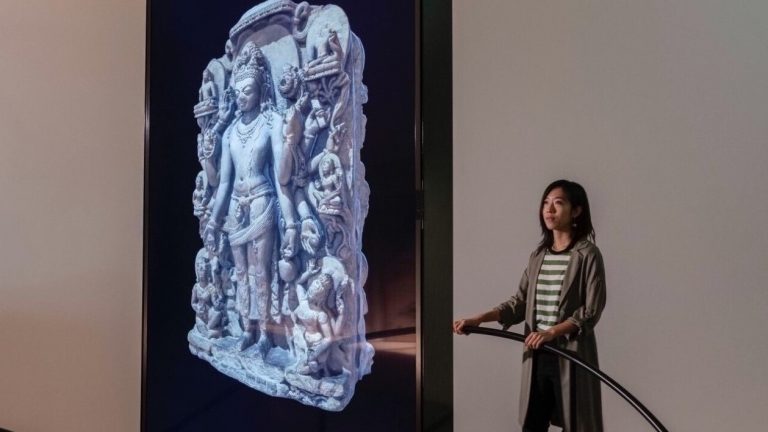
Digital Twins: Negotiating identity and translocated heritage in the global (2023-2026)
This project unites humanities, digital heritage and social science experts at EPFL, Indian Institute of Technology (IIT) Jodhpur, IIT Indore, Flame University and Université de Genève.
Funding scheme: Indo-Swiss Joint Research Programme: Heritage and Cultural Exchange in Global Age, Swiss National Science Foundation (SNSF)

«Cosmos Archeology», vers l’infini et au-delà!
23 Sept 2022, Isabelle Carcelles | Le Courrier
Aux EPFL Pavilions, on prend un bain de planètes, entre ballet infernal des débris spatiaux et plongée dans la contemplation des formes et couleurs de l’Univers.
“Cosmos Archeology”, to infinity and beyond! At the EPFL Pavilions, we take a bath in the planets, between the infernal ballet of space debris and an immersion in the contemplation of the shapes and colors of the Universe.
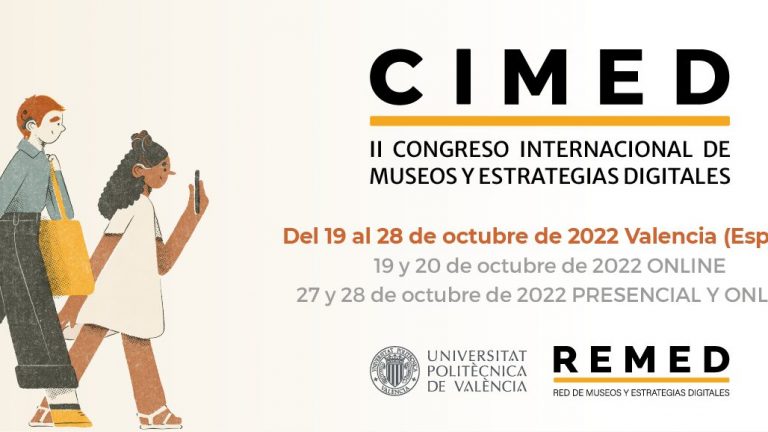
Sarah Kenderdine gives a speech at the II International Congress of Museums and Digital Strategies, CIMED 2022
The CIMED 2022, organized by the Polytechnic University of Valencia together with the Network of Museums and Digital Strategies REMED in October 2022, is proposed as the meeting place between professionals and researchers about the needs of museums and digital strategies for the Spanish-speaking community. A place where you can find out what’s new in the sector as well as the strategies and tools used, a key and increasingly determining issue for the prevalence of these institutions that are so relevant to society.
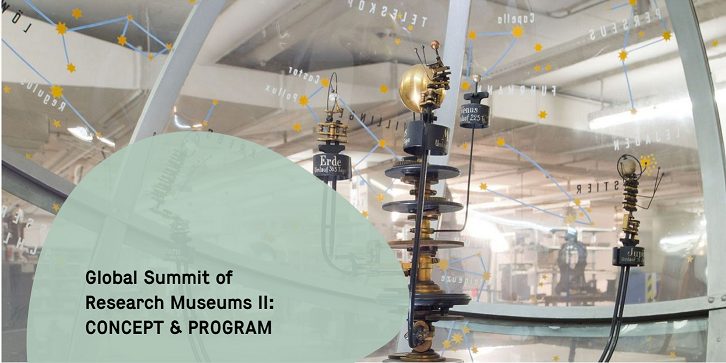
Keynote by Sarah Kenderdine at the Global Summit of Research Museums II
Speech title: Embodied Knowledge Systems (on Display)
Panel: Physical objects, intangible cultural heritage (ICH), and the digital age
Event: Global Summit of Research Museums II: Objects in Motion – Museums in Motion, October 17-19, 2022, Munich

Meeting Sarah Kenderdine: Digital museology in the age of experience
Using the most imaginative digital techniques, Professor Sarah Kenderdine brings us artworks from a totally innovative and unprecedented angle. Her research on interactive and immersive experiences for galleries, libraries, archives and museums is groundbreaking. She directs Laboratory for Experimental Museology (eM+) and is the Director and Lead Curator of EPFL Pavilions. She has curated and produced over 90 exhibitions and installations and was included in the Museum Influencer List 2020.
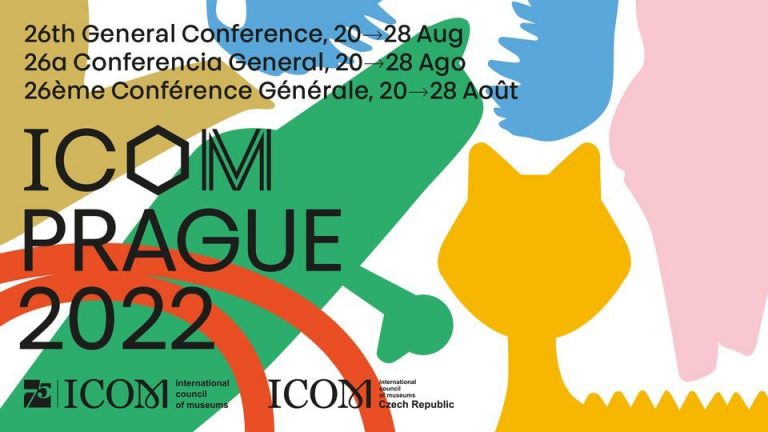
Plenary speech and panel discussion at ICOM 2022, Prague
Speech title: Computational museology: futures for inclusive museums
Panel: Delivery: Museums and New Technologies
Nanet Beumer, Head of Digital and Marketing, Rijksmuseum (Amsterdam), Lāth Carlson, Executive Director, Museum of the Future (Dubai), Professor Sarah Kenderdine, Director of EPFL eM+ and EPFL Pavilions, and Sarah Brin, Head of Business Development, Media molecule (Sony PlayStation) took part in the last panel of the conference dedicated to museums and new technologies. They presented innovative and inspiring projects, inviting us to question the link between museums and technology in the broadest sense, and not only digital technology, in the service of the development of knowledge and the experience of visitors.
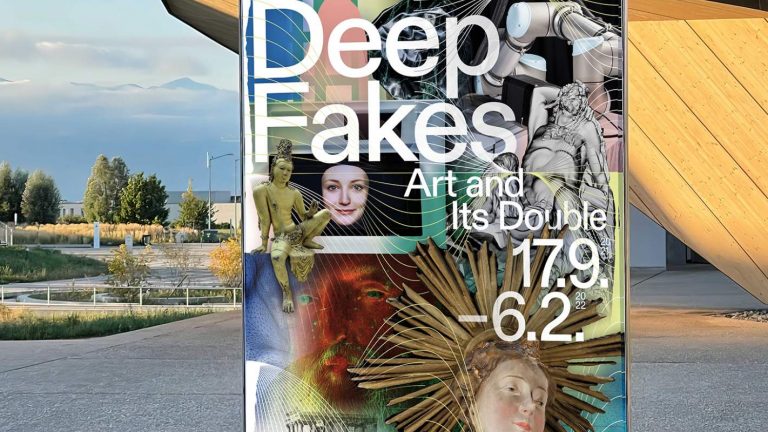
On the bleeding edge of heritage conservation: “Deep Fakes” at EPFL Pavilions, Lausanne
April 8, 2022 | By Jules Pelta Feldman
Though some techniques of performance conservation, such as oral history and body-to-body transmission, may sometimes avoid technological mediation altogether, there are also technologies of mind-boggling sophistication now in development – and in use! – for the conservation, study, and transmission of both tangible and intangible heritage. Some of these technologies and their potential applications were on view in the exhibition Deep Fakes: Art and Its Double at the EPFL Pavilions.
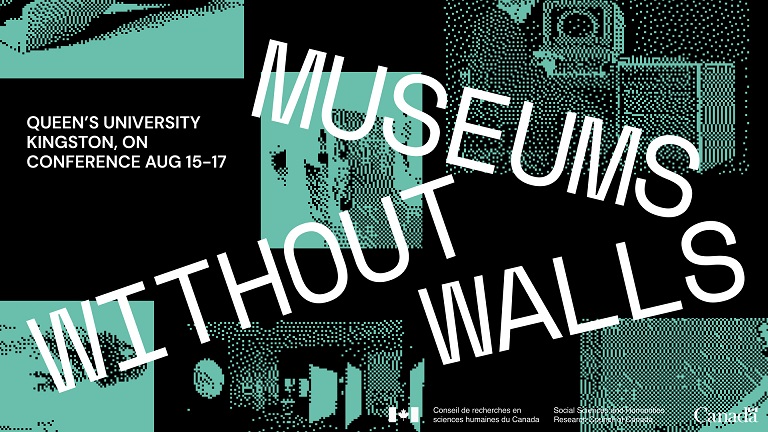
Sarah Kenderdine gives a keynote speech at Museums Without Walls
Speech title: Computational Museology: Interfaces to Cultural (Big) Data
CSNI researchers Teodora Fartan and Paula Roush will both participate in the Museums Without Walls conference at Queen’s University, Kingston, Canada, August 15-17, with keynotes by Michael Connor (Rhizome), Sarah Kenderdine (Experimental Museology Lab / EPFL), Pippin Barr (Concordia University), and Sara Diamond (OCAD University). The publicity materials state: “In the spirit of critical and social museology, the Museums Without Walls conference invites us to reclaim notions of virtuality from the technopositivist buzz and revisit the long history of relationships between museums and media.”
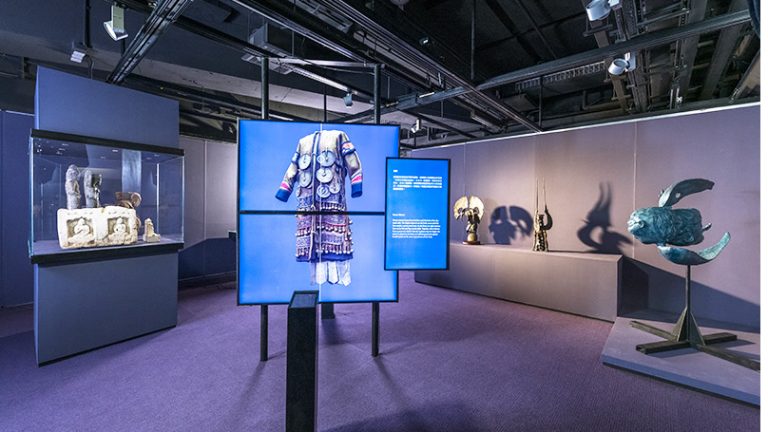
The Indra and Harry Banga Gallery presents “Hunters, Warriors, Spirits: Nomadic Art of North China”
The Indra and Harry Banga Gallery at City University of Hong Kong (CityU) presents the new exhibition “Hunters, Warriors, Spirits: Nomadic Art of North China” from 23 July until 23 October. The exhibition features over 250 artworks from the early 1st millennium B.C.E. to the “golden age” between the 10th and 13th centuries C.E. These include everyday objects and weapons from the early nomads of northern China. In addition to the ancient objects, visitors can enjoy interacting with a series of new media artworks, including two original shamans’ costumes, shown in 3D with interactive tools and created by Jeffrey Shaw and Sarah Kenderdine, as well as an iDome projection of a monumental 5th-century Buddha from the Yungang Grotto.
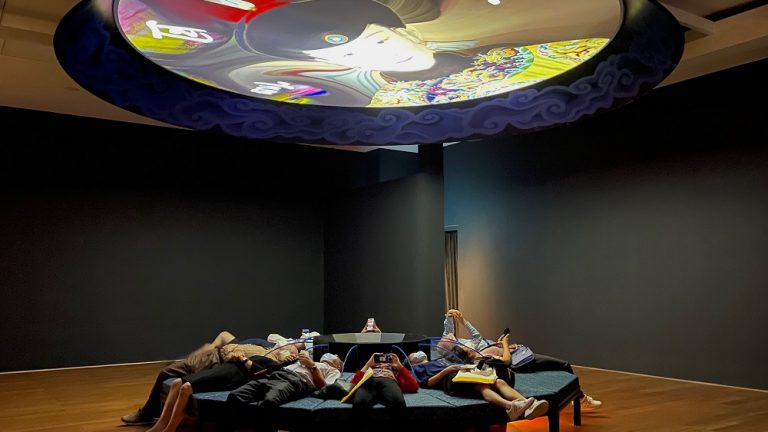
Bringing the Palace Museum’s treasures to life: Five new artworks presented at the Hong Kong Palace Museum
The prestigious Hong Kong Palace Museum (HKPM) opened on 3 July 2022, as the latest addition to Hong Kong’s arts and cultural offerings and the West Kowloon Cultural District. The Museum contains a treasure trove of more than 900 works of art on loan from the Palace Museum in Beijing alongside exquisite pieces from the Louvre. Together with Jeffrey Shaw and our team of collaborators, we were honoured to create five new interactive, algorithmic and animated artworks to be embedded among the series of profound object exhibitions. This was a wonderful opportunity to grapple with the profound issues of articulating cultural heritage through new media.
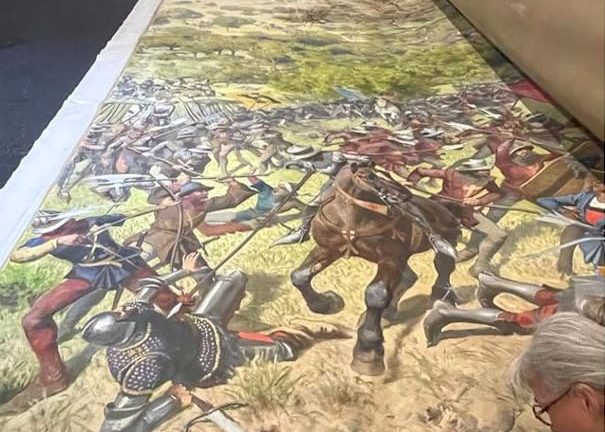
Une équipe de l’EPFL numérise le Panorama de la Bataille de Morat
La Matinale – RTS.ch |22 July 2022
Oeuvre de presque 100 mètres sur 10 créée en 1893 par le peintre allemand Louis Braun, le célèbre Panorama de la Bataille de Morat est en train d’être numérisé à l’EPFL. Ce travail donnera naissance à l’une des plus grandes images numériques jamais produites.
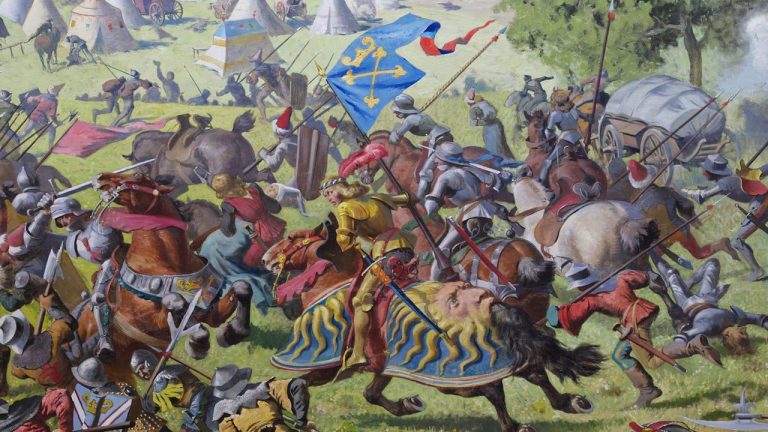
EPFL lab to digitize 1,000m2 ‘Swiss national treasure’
Sarah Kenderdine, head of the Laboratory for Experimental Museology, is leading the digitization and valorization of the Panorama of the Battle of Murten – a 100 x 10-meter work created in 1893 by German panorama painter Louis Braun – in an undertaking that promises to yield one of the largest digital images ever produced.
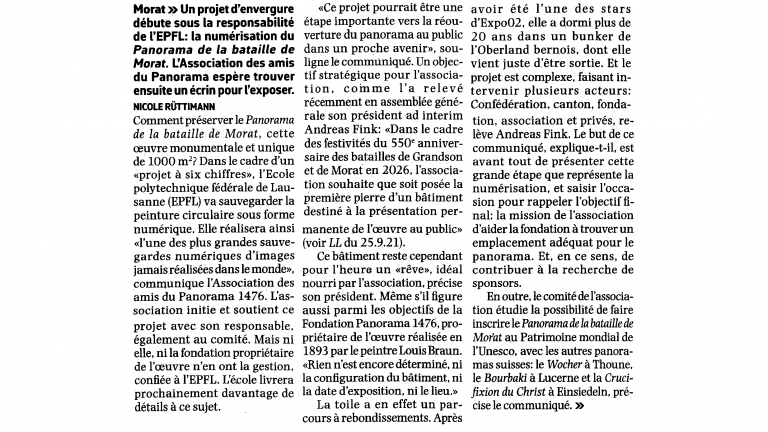
La mémoire de la bataille de Morat sauvegardée par numérisation //The memory of the Battle of Morat saved by digitization
La Liberté | Text: Nicole Rüttimann, 7 June 2022
Un projet d’envergure débute sous la responsabilité de l’EPFL: la numérisation du Panorama de la bataille de Morat. L’Association des amis du Panorama espère trouver ensuite un écrin pour l’exposer.
A large-scale project begins under the responsibility of EPFL: the digitization of the Panorama of the Battle of Morat. The Association of Friends of the Panorama then hopes to find a setting to exhibit it.
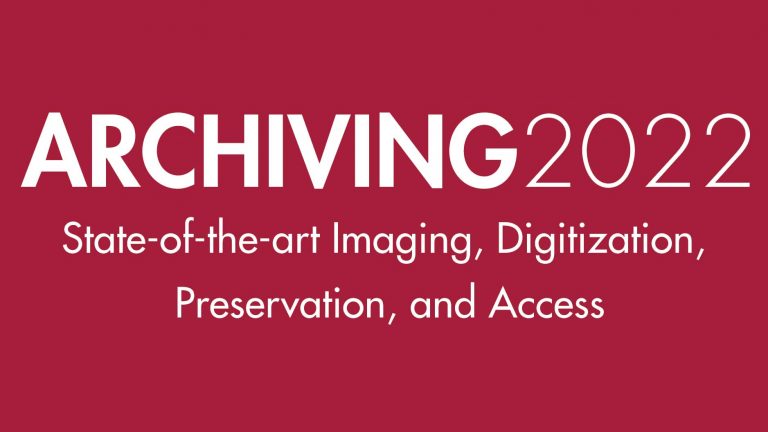
Sarah Kenderdine to give an opening keynote at Archiving 2022
10:00-11:00 NY/ 16:00-17:00 Paris, 7 June 2022
Computational Museology: Interfaces to Cultural (big) Data
Sarah Kenderdine, EPFL (Switzerland)

Songlines exhibition travelling to Humboldt Forum Berlin
17 June – 30 October 2022
Special Exhibition at Humboldt Forum
The exhibition Songlines: Tracking the Seven Sisters tells one of the central creation stories (songlines) of the Australian continent. Songlines are cultural routes that traverse all of Australia. Through story, song and visual culture like ceremonial performance or rock art, songlines map the routes and activities of the Ancestral beings, whose travels created the land. The Seven Sisters songlines tell the saga of seven women who cleverly and cunningly elude a male pursuer with magical powers as they flee across three deserts.
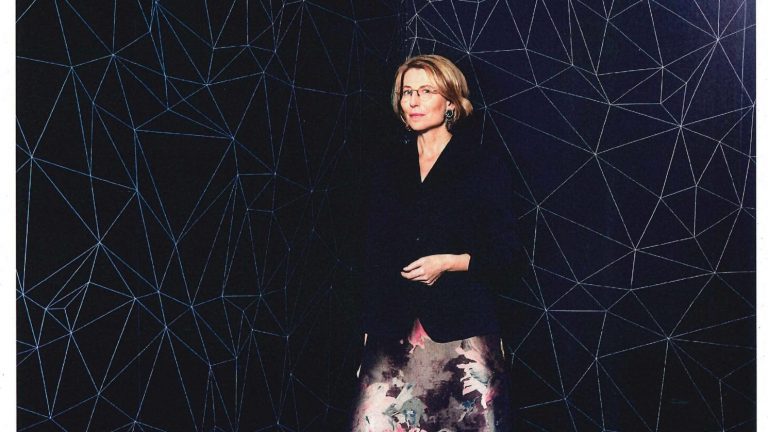
Museum reloaded. Sarah Kenderdine is working to reinvent the concept of exhibition.
Kultur | Text: David Torcasso, Fotos: Sébastien Agnetti
Sarah Kenderdine arbeitet daran, das Konzept Ausstellung neu zu erfinden – nur anschauen ist passé.
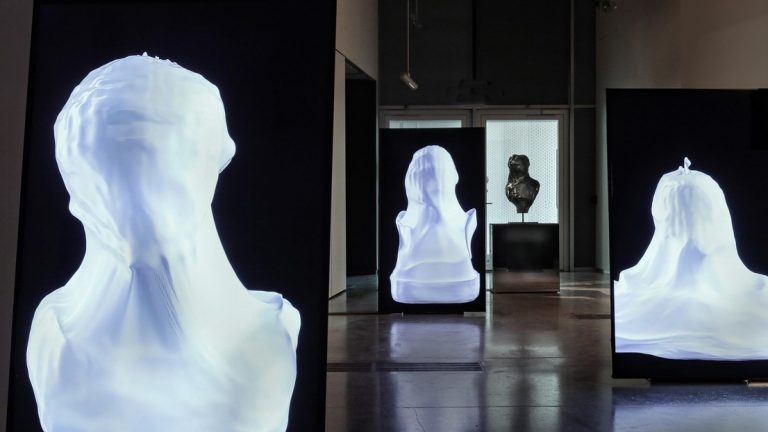
Les nouveaux usages du numérique dans la culture // Noval use of digital technology in culture
Le Journal des Arts | 27/04/2022, by Ingrid Dubach-Lemainque
« Le Covid-19 et le réchauffement climatique ne font que renforcer le besoin pour le numérique dans les musées » : le constat de la chercheuse en muséologie Sarah Kenderdine est dans l’air du temps. Cette professeure de l’EPFL où elle occupe la chaire de muséologie numérique sait mieux que personne de quoi il est question : depuis des années, elle explore de nouvelles approches pour interagir avec l’héritage culturel et artistique dans des environnements immersifs. À la plateforme « Art et Science » de l’institution universitaire qu’elle dirige depuis 2016, elle fait un tour d’horizon des pratiques et des avancées en matière de numérisation du patrimoine et de l’art.
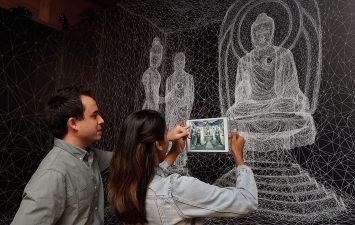
L’émancipation du double – Per pectives informatiques // The Emancipation of the Double – Computing Perspectives
artlog.net | Kunstbulletin 4/2022, by Françoise Ninghetto
Comme la deuxième partie du titre de l’exposition le précise, la présentation traite du « double » des objets artistiques, à rebrousse-poil du concept de la copie, du double au sens de « faux » que dénoncent les experts en histoire de l’art. Il est captivant, fascinant de voir à quels résultats de précision les techniques d’imagerie, fruits de longues recherches et mises au point par l’EPFL, parviennent à reproduire avec exactitude des productions humaines que ce soient des objets d’art ou des architectures voire des sites de grandes dimensions.
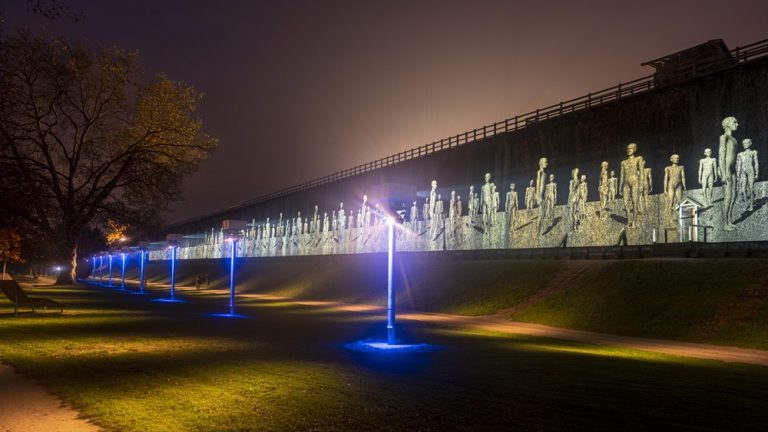
Lichtsicht 7 projektions-triennale catalogue released
In cooperation with Sarah Kenderdine, Jeffrey Shaw addresses this globalised thought from a different, much less visually stunning perspective: the technical perspective. His work entitled Fall Again, Fall Better is nothing less than a supposedly simple algorithmic imitation of a so-called push puppet. A new version of this 2012 work has been created for the triennial in Bad Rothenfelde. It shows twenty groups of computer-modelled human figures that, one after the other, fall over across the 312 metre length of the projection screen. They all fall over, only to stand up again to repeat the causal sequence anew.
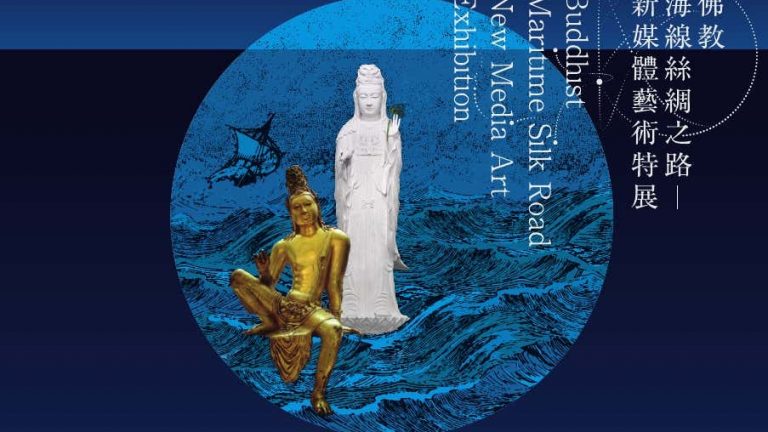
Exhibition review: 展現「佛教海線絲綢之路」苦行壯舉
World Journal 世界日報 | 06/04/2022
The exceptional exhibition “Buddhist Maritime Silk Road”, using new media art, is the first in the world to incorporate the concept of the Metaverse, using 1 billion pixels in super 8K technology, to see the history of Maritime Buddhism from an exhibition without cultural relics. It is not only a pioneering work in the field of Buddhism but also the first display of achievements by transnational academic research, archaeology, digital video, digital media, etc.
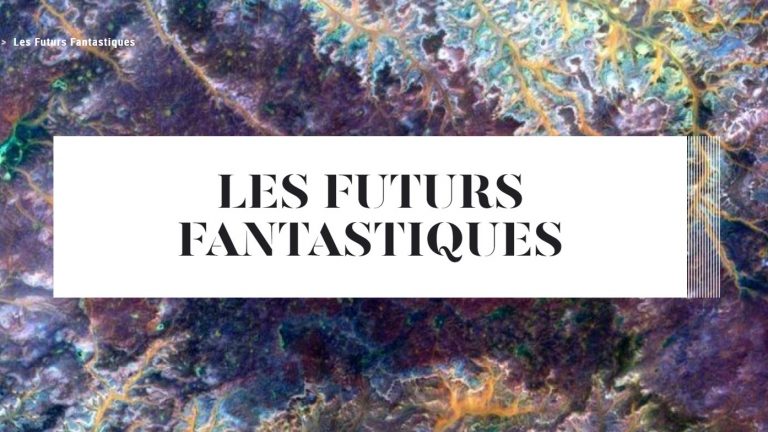
Broaden the horizons of discovery | The Fantastic Futures
Au-delà de la connaissance propre, c’est cependant la notion de découvrabilité qui s’enrichit le plus: les horizons de ce qui est découvrable s’élargissent. La découverte peut s’appliquer à des contenus impossibles à interroger jusqu’alors, telle cette base de mouvements constituée dans le cadre du projet « Hong Kong Martial Arts Living Archive » et présentée par la muséologue Sarah Kenderdine. Également présenté par Kenderdine, des potentialités se développent qui renouvellent l’art de poser la question de l’interface. Le projet « Jazz Luminaries 2019 » vise à reproduire l’expérience ressentie quand on assiste à un concert.
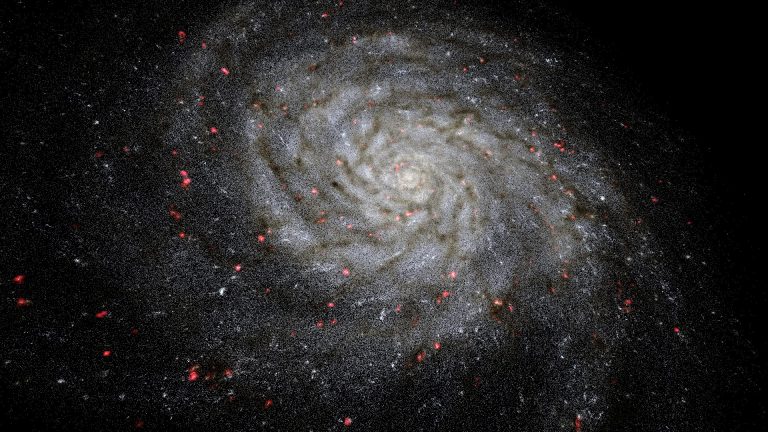
Archaeology of Light
“Archaeology of Light” is a fully immersive, short movie that charts out a visit through the expanse of cosmological and astrophysical data. Enjoy the ride through this virtual universe, starting from the great blue planet we call home. With the release of VIRUP comes a short movie entitled “Archaeology of Light”, one possible journey through the virtual universe made possible thanks to the open software.
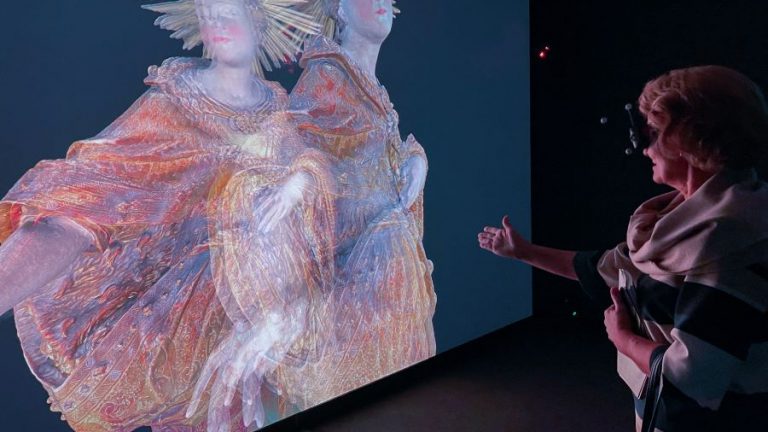
Digital Projection reinvents artworks with technology enhancements
The Deep Fakes: Art and its Double exhibition is creating conversation with a unique showcase of emerging digital culture at EPFL Pavilions in the French-speaking city of Lausanne. Technologies disrupting the art world include artificial intelligence, computer vision, interactive and immersive media, as well as 3D and 5D printing are showcased. The exhibition’s curator and EPFL Pavilions director Sarah Kenderdine explains that the 1,000m² exhibition is “the culmination of several years of new creative practices emerging from the world of computer science,” dubbing the new artefacts, building upon existing sculptures and artworks, as ‘cultural deep fakes’.
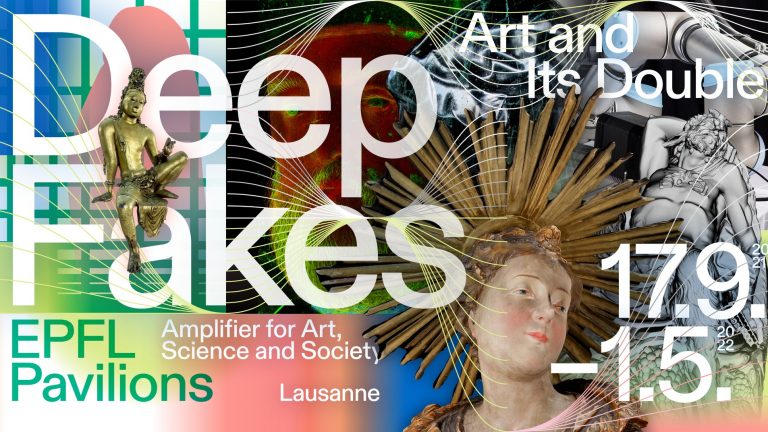
Digital Projection partakes in Deep Fakes exhibition
Digital Projection’s Satellite MLS system has been paired with its Multi-View 3D technology for the first time in the modelling of a 1,000-year-old abbey at an exhibition in Switzerland. Deep Fakes: Art and its Double, is turning heads at EPFL Pavilions in Lausanne with a showcase of the emerging digital culture disrupting the art world. From artificial intelligence to computer vision, interactive and immersive media to 3D and 5D printing, technology is revolutionising how art is conceived, created and experienced, and Deep Fakes is the first exhibition to deal with this technological transformation at scale and intensity.
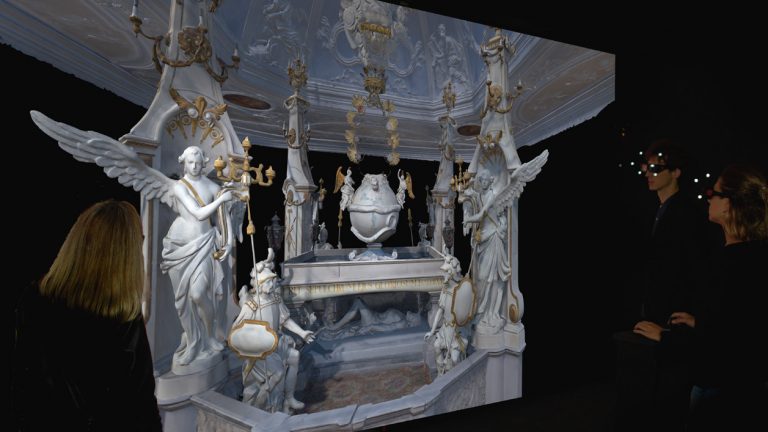
Deep Fakes review in Spike Art Magazine
Originating from a Reddit board where users showed off their image manipulation abilities by digitally collaging celebrities into porn, the term “deepfake” now triggers endless conceptions of oncoming post-reality dystopia. Taking this new media category as its title, an exhibition at the centre of one of the top STEM universities in the world, attempts to look at recent advancements in the related technology and position them as possible assets in the production and conservation of human culture from the past to the present. Through precise replication and the ability to virtually experience different locales, the deepfake – widely considered
in this survey – plays at dismantling the primacy of in-person experience, nudging us to question what constitutes “the unique” today.
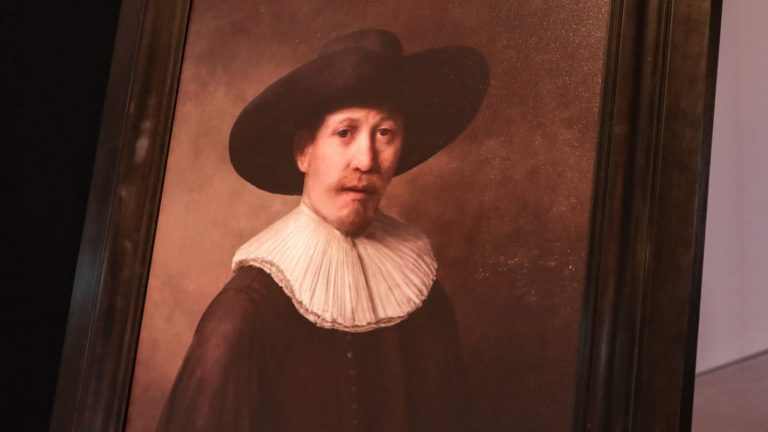
TWIST: Täuschend echt. Deepfakes, KI und synthetische Medien
ARTE | Broadcast from 01/23/2022
It is becoming easier and easier to produce so-called “deepfakes” – to manipulate videos, images and sounds with the help of artificial intelligence so that they look deceptively real. A big danger? Romy Strassenburg talks to experts about the risks and opportunities of so-called “synthetic media”. The interview with Sarah Kenderdine starts at minute 13:00.

«Deep Fakes»: des œuvres d’art à toucher sans modération
“Deep Fakes”: works of art to touch without moderation
Le temps | Jan 21, 2022, by Olga Yurkina
At EPFL, an exhibition questions the relationship between the original and the copy in the digital age. Meeting with the curator Sarah Kenderdine, director of the Experimental Museology Laboratory.
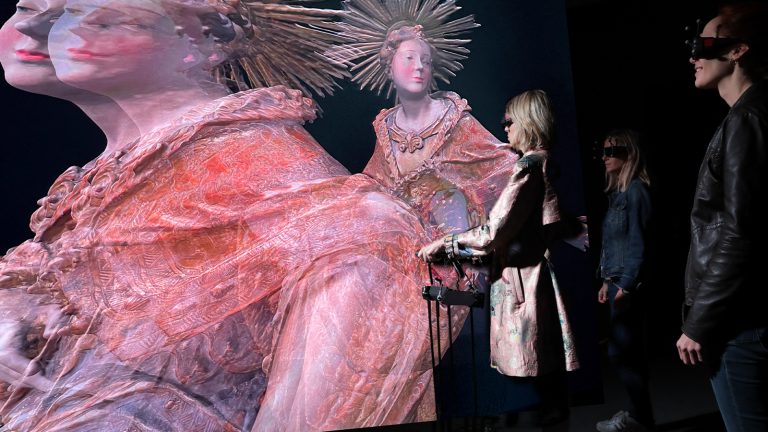
The original work, an outdated concept?
Echt war gestern // L’œuvre originale, un concept dépassé?
Blog Swiss National Museum | Dec 15, 2021
In the art world, copies do not have good press. Can the near-perfect simulations offered by digital technology be a game-changer? This is the question raised by the exhibition Deep Fakes: Art and Its Double, at EPFL Pavilions, Lausanne.
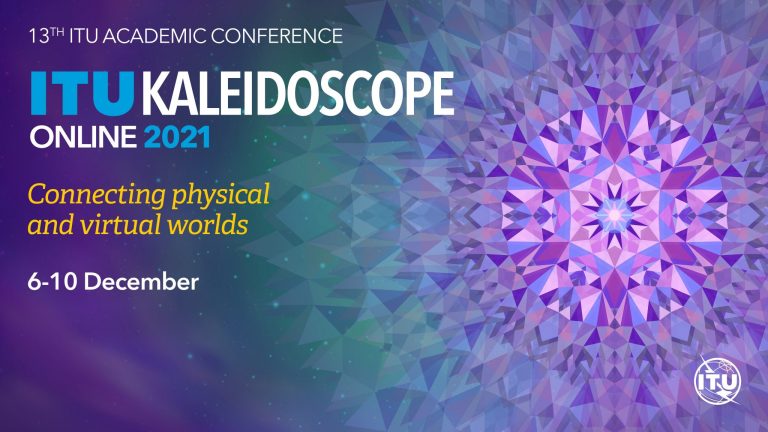
Sarah Kenderdine Panelist at ITU KALEIDOSCOPE 2021
Special invited session on Digital empowering Cultural Heritage… and vice-versa
Kaleidoscope 2021 – Connecting physical and virtual worlds is the thirteenth in a series of peer-reviewed academic conferences organized by ITU to bring together a wide range of views from universities, industry and research institutions. The aim of the Kaleidoscope conferences is to identify emerging developments in information and communication technologies (ICTs) and, in particular, areas in need of international standards to aid the sustainable development of our interconnected world.
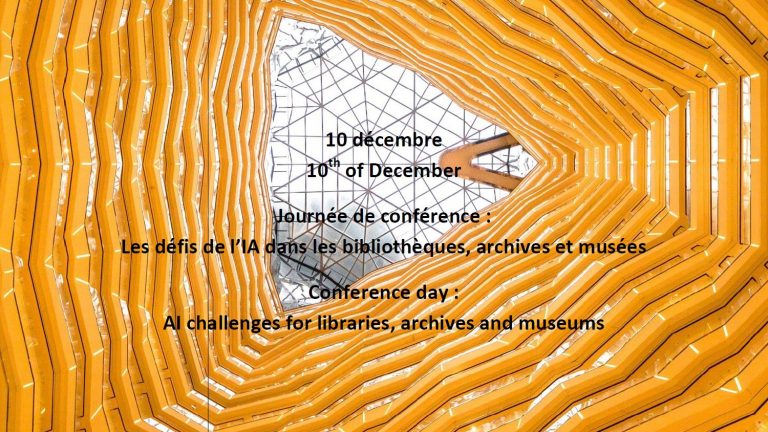
Sarah Kenderdine talks about legal and ethical issues for AI & GLAM collections
AI & GLAM collections: legal & ethical challenges to sharing GLAMs collections – Sarah Kenderdine, Yaniv Benhamou
In the program of the international conference “Les Futurs Fantastiques”, you’ll find the main issues related to the development of AI technologies in GLAMs: collective strategy, internal organisation, partnerships, training and professional change, ethics, computer vision, handwritten text recognition… All these themes will be enlightened through feedback presentations, practical examples, use cases, and discussions.
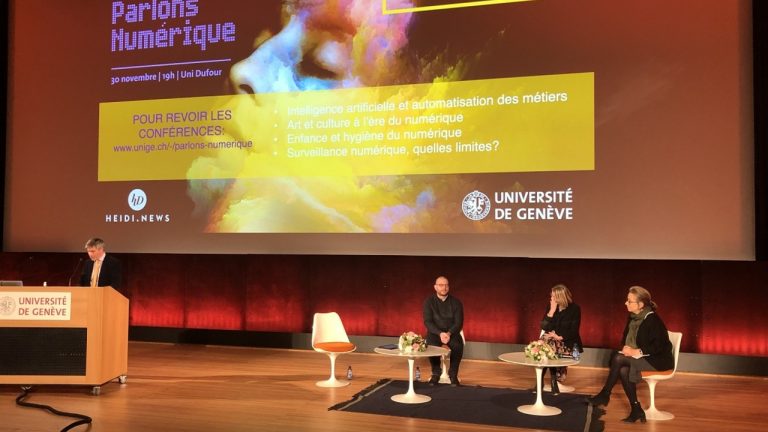
Le numérique modifie certains paradigmes de l’art
Digital is changing certain paradigms of art
An artificial intelligence that reproduces a painting by Rembrandt, another capable of improvising a text and interacting with actors, disrupted economic circuits, relations between artists and audiences altered … the place, the role and the very essence of artistic creation come out of it rethought? Culture, like the rest of the world, has not been the same since the digital age. Experts discussed it on Tuesday at the University of Geneva, as part of the “Let’s Talk Digital” conference.
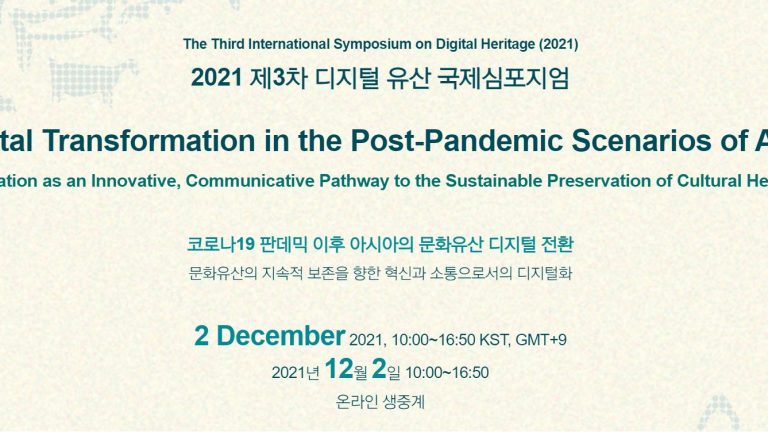
Keynote speech at The Third International Symposium on Digital Heritage
Professor Sarah Kenderdine gives a speech on Computational Museology: Experimental Interfaces to Cultural (Big) Data, for The third International Symposium on Digital Heritage, titled “Digital Transformation in the Post-Pandemic Scenarios of Asia: Digitization as an Innovative, Communicative Pathway to the Sustainable Preservation of Cultural Heritage,” will be held as an online meeting by the Cultural Heritage Administration of Korea on Thursday, December 2, 2021.

Atlas of Maritime Buddhism in “Multi-Prismatic Mutual Views: International Invitational Exhibition of Contemporary Art”
Jointly organized by the Macao Museum of Art, under the auspices of the Cultural Affairs Bureau, and the School of Intermedia Art of the China Academy of Art, the “Multi-Prismatic Mutual Views: International Invitational Exhibition of Contemporary Art” was inaugurated on 19 November, at 7pm, at the Macao Museum of Art.
The “Multi-Prismatic Mutual Views: International Invitational Exhibition of Contemporary Art” is held from today until 6 February 2022.
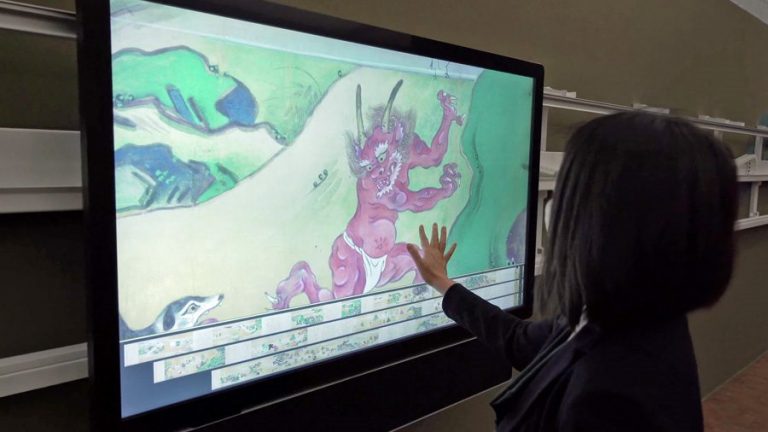
Ausstellung «Liebe, Kriege, Festlichkeiten» – Narrative art from Japan
As part of the exhibition at Museum Rietberg, the interactive installation «Emaki Navigator» makes the three horizontal scrolls Der Gedichtwettstreit der zwölf Tiere from the mid-17th century accessible in their original format.
“This opens up details that cannot be seen with the naked eye,” explains Prof. Sarah Kenderdine, head of the Laboratory for Experimental Museology (eM +) at EPFL Lausanne, who designed and implemented the project with her team for the exhibition.
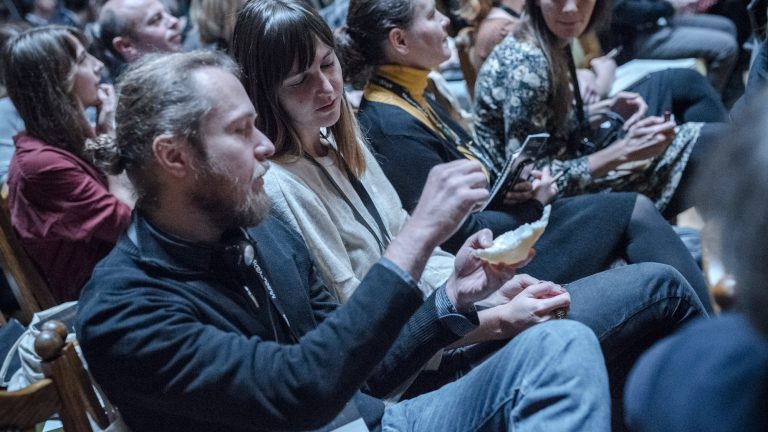
Sarah Kenderdine gives a speech at MuseumDigit 2021
Digital Pioneers – Sarah KENDERDINE: Experimental Museology in the Age of Experience
MuseumDigit is organized by the Hungarian National Museum’s National Centre of Museological Methodology and Information. A showcase of innovative digital cultural trends and solutions, we welcome museum directors, decision makers from the cultural sphere, heritage and museum professionals, researchers, IT specialists, creatives and communication experts.
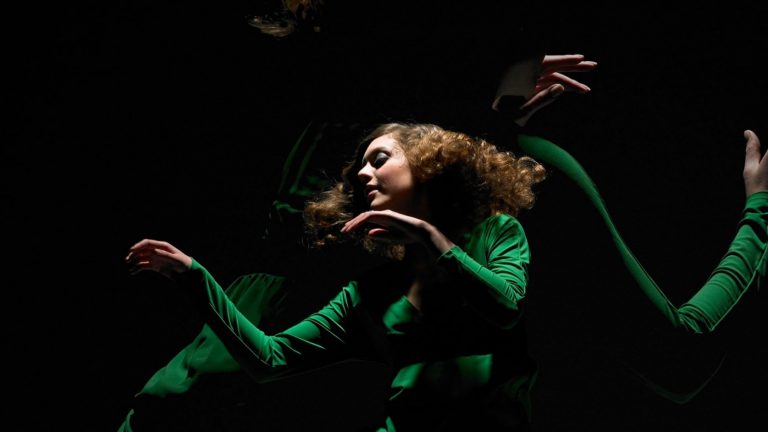
Sarah Kenderdine Speaker at “Art and culture in the digital age”
After music, literature, cinema, it is now up to museums and the art market to dematerialize. The health crisis has also accelerated the trends of digitization. In recent months, the cultural scene has redoubled its creativity in offering content, by using digital technologies and innovative formats in particular. While some may see these changes as a threat, others see new artistic opportunities complementary to the traditional conventions. In this changing context, How to understand the current and future challenges of digital in culture? What will be the consequences for cultural actors and the public?
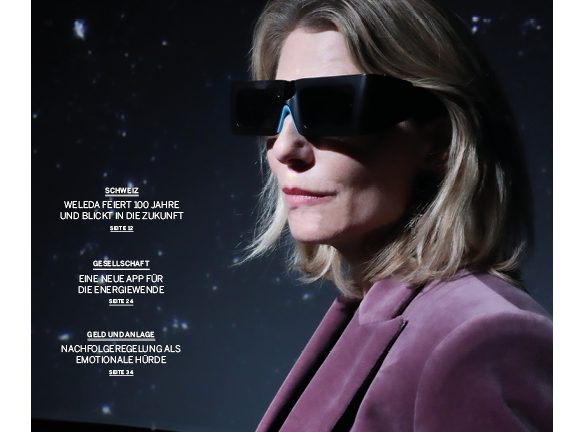
Pixel-Visionary Sarah Kenderdine wants to revolutionize museum visits
Women in Business | November 2021
Digitization has long been at the top of the agenda in politics, society and culture, and has not only found its way into museums since the pandemic. Professor Sarah Kenderdine sets completely new standards in the field of digital museology. With 360-degree panoramas and digital replicas, she has redefined how we will encounter culture in the future. We conducted a detailed interview with the EPFL professor in Lausanne (from page 4).
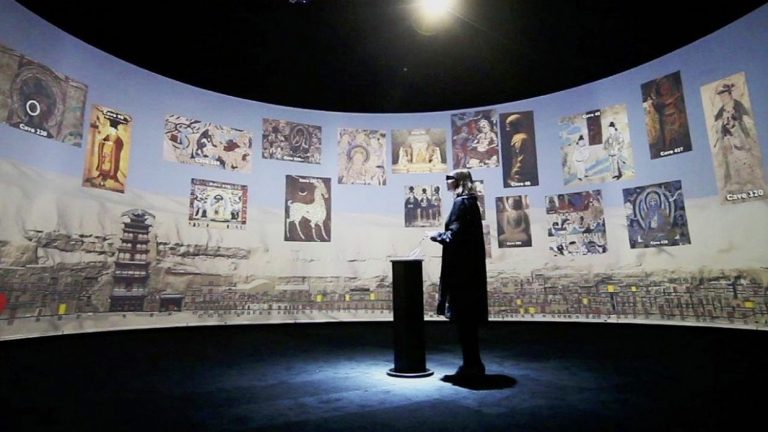
Why Immersion Matters To The Future Of Museum Experiences
More and more — and increasingly so in a post-pandemic landscape — experiential design has become a key priority for cultural organizations hoping to deepen and broaden their offerings. The use of immersive technologies such as virtual and extended reality haven’t just transformed the ways in which visitors engage and interact with exhibitions, but how institutions embark on digital storytelling and preserve cultural heritage.
To better explore this expanding arena, the Los Angeles chapter of ACM SIGGRAPH, an international community of creative technologists, hosted “Museums, Immersive Experiences and Beyond.” The virtual panel, which featured innovators in the field, discussed the impact of immersion and what it might bode for the field of experience design. Here are three key ways immersion is offering cultural organizations new ways to engage their audiences.

Speech at LA ACM SIGGRAPH: Museums, Immersive Experiences and Beyond
Sarah Kenderdine is Director of the Lab for Experimental Museology at EPFL in Lausanne, Switzerland. Jeffrey Shaw is Dean of the School of Creative Media (SCM), City University, Hong Kong. They each have extensive careers as “new media” researchers and artists, as well as being long time collaborators. Their large scale 360°degree immersive experience installations with AR interactivity often focus squarely on topics of cultural heritage preservation. They have been widely exhibited in Europe, Australia, Asia, and India. Virtual reality, data analytics, motion capture and more are featured in their works. We will have the opportunity to hear about their latest exhibition The Atlas of Maritime Buddhism which is now open in Hong Kong.
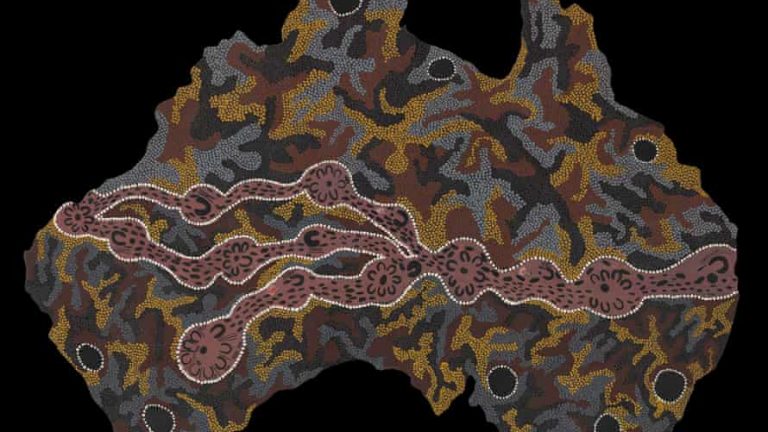
Songlines: the Indigenous Australian exhibition preserving 65,000 years of culture
The Guardian | Oct 25, 2021
“Of course, you can look at the paintings on the walls and appreciate them for the beautiful objects that they are,” explains Margo Neale, head of the Indigenous knowledges centre at the National Museum of Australia. “But if that’s all you appreciate them for then you will be missing out on so much.”
Neale is talking about Songlines: Tracking the Seven Sisters, which has just arrived at The Box in Plymouth, its first stop on a world tour after attracting 400,000 visitors in Australia. The exhibition features more than 300 objects – paintings, sculpture, ceramics, installation and film; works made by 100 or more artists mostly over the last decade, though the culture and ideas that inform them stretch back 60,000 years.
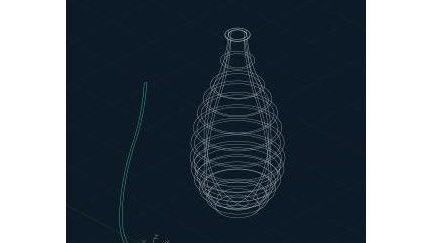
Deep Fakes: Art and Its Double | Vitromusée Romont
Talk at Vitrocentre Romont. The one-day conference, organized in conjunction with the exhibition “Interconnected – Venise et Romont en dialogue” will address the growing importance of digital tools for research, artistic production and museum work, by presenting current developments and applications in glass and applied arts. Special attention will be placed on the potential of virtual reproductions and the way they changed our perception and valorization of original artworks.
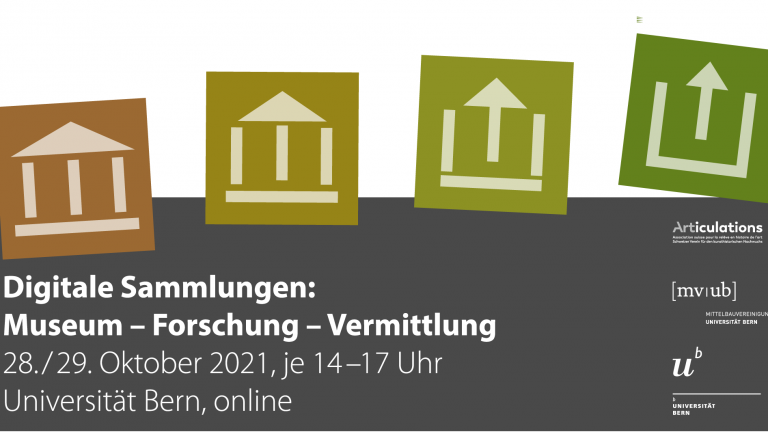
Keynote for “Digitale Sammlungen: Museum – Forschung – Vermittlung”
Sarah Kenderdine: “Deep Mapping: The Atlas of Maritime Buddhism”
The event, serving as an interdisciplinary exchange on digital art collections, will take place online on October 28 and 29, 2021. It invites museum staff, students, doctoral students and researchers from the fields of art history, digital humanities, computer science, media design and other professions from cultural and technological fields to discuss topics about “Digital collections from a museum/research/educational perspective”.

Sarah Kenderdine gives a keynote about Multimodal Affect and Aesthetic Experience at ICMI 2021
The 23rd ACM International Conference on Multimodal Interaction (ICMI 2021) is held in Montreal, Canada. ICMI is the premier international forum for multidisciplinary research on multimodal human-human and human-computer interaction, interfaces, and system development. The conference focuses on theoretical and empirical foundations, component technologies, and combined multimodal processing techniques that define the field of multimodal interaction analysis, interface design, and system development.
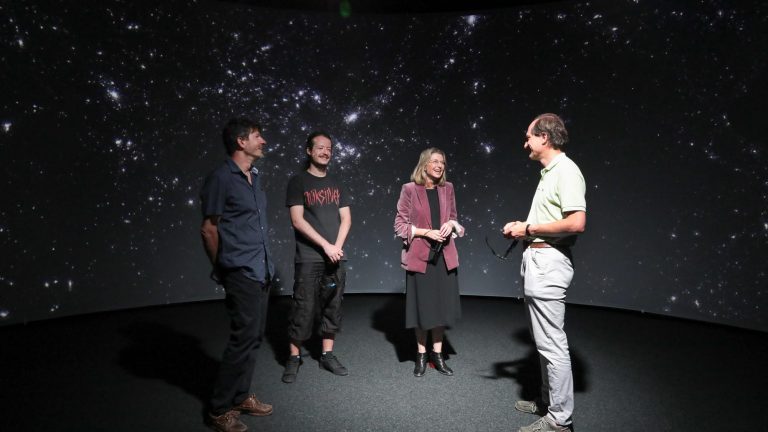
Big picture, big data: Switzerland unveils virtual reality software of universe
Researchers at one of Switzerland’s top universities released open-source beta software this month that allows for virtual visits through the cosmos including up to the International Space Station, past the Moon, Saturn or exoplanets, over galaxies and well beyond. The program — called Virtual Reality Universe Project, or VIRUP — pulls together what the researchers call the largest data set of the universe to create three-dimensional, panoramic visualizations of space.

Songlines review – an epic, pioneering show of Aboriginal art and culture
A pavilion has been erected in the square outside The Box in Plymouth. Go in and lie down on its floor. Gaze dreamily upwards into the bright images – wandering lines and spotted patterns, clumps of colour and gathered dots – that drift slowly across the domed ceiling. Let your imagination slip gently into their mysterious world.
This is the world of Australia’s Aboriginal people. These images are the repositories of ancient First Nation stories. They embody messages that remain relevant today.

New Exhibition: Songlines Tracking the Seven Sisters
The Levinsky Gallery, The Box Plymouth
21 Oct 2021 – 27 Feb 2022
The National Museum of Australia’s award-winning exhibition comes to The Box this autumn/winter. Experience ancient stories from the world’s oldest continuing culture, told through more than 300 paintings and objects by over 100 different artists. Take an epic journey that crosses three states, three deserts and some 500,000 square kilometres. With ceramics, paintings, sculpture, installation and film, come and immerse yourself in an exhibition that uses the power of art and culture to connect us across time zones and international borders.
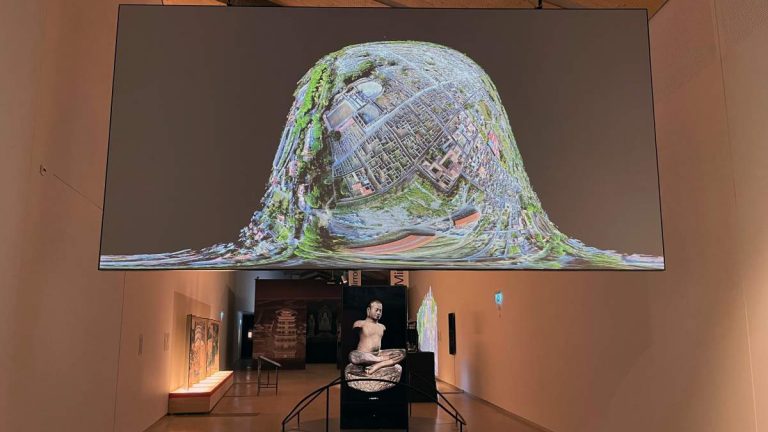
Digital art takes over the senses in a “Deep Fakes” exhibition
El arte digital se apodera de los sentidos en una exposición de “Deep Fakes”
SWI swissinfo.ch | Oct 7, 2021
In Switzerland, a digital art exhibition explores the capacity of digital copies of artistic treasures to generate lasting emotions in public. With a provocative title of “Deep Fakes”, this exhibition uses artificial intelligence and combines augmented, virtual and mixed reality to make the visit “real”.
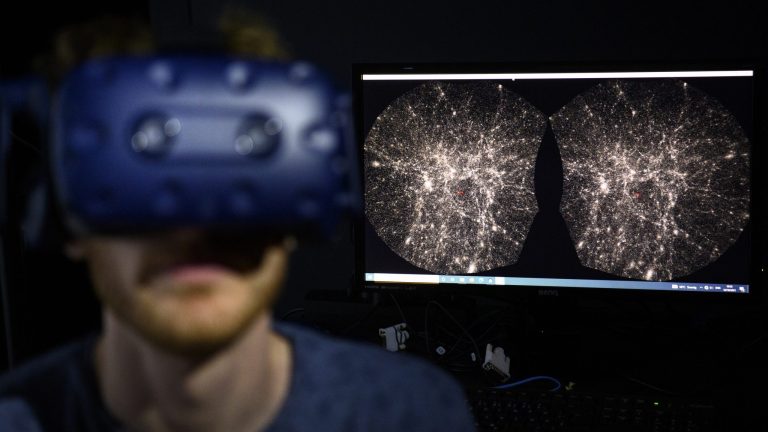
Big picture, big data: Swiss unveil VR software of universe
The Washington Post | Oct 12, 2021
Hadrien Gurnel, software engineer EPFL’s Laboratory for Experimental Museology (eM+) explores with a virtual reality helmet the most detailed 3D map of the universe with the virtual reality software VIRUP, Virtual Reality Universe Project developed by Swiss Federal Institute of Technology (EPFL) scientists of the Laboratory of Astrophysics (LASTRO) at EPFL’s Laboratory for Experimental Museology (eM+), in St-Sulpice near Lausanne, Switzerland, Oct. 12, 2021.

Explore the universe with virtual reality
Have you ever wanted to explore outer-space? Now you can, without leaving Earth, thanks to powerful, open-source beta software VIRUP that builds – in real-time – a virtual universe based on the most detailed contemporary astrophysical and cosmological data.
The software’s transition from isolated experience of VR goggles to the collective, theatrical experience offered by domes and caves, became possible through a collaboration between LASTRO scientists and researchers at the Laboratory for Experimental Museology (eM+).
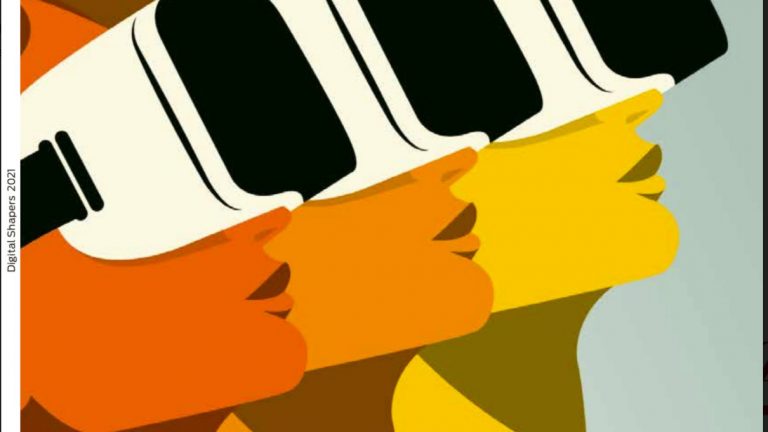
Sarah Kenderdine profiled in Digital Shapers 2021: The Creatives
For the sixth time, BILANZ, in cooperation with Handelszeitung, PME and Digitalswitzerland, has chosen the 100 most important people in Switzerland who are driving digitization in the country.
The creatives: You use digitization imaginatively – for music or films, for art or games.
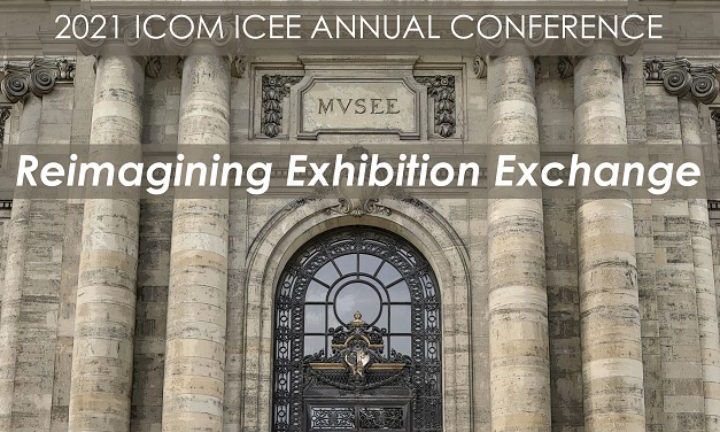
Panel presentation at 2021 ICOM ICEE Annual Conference
Reimagining Exhibition Change – Reimagining Technology
The physical presence of visitors in exhibition galleries and the digital experience of virtual audiences can no longer be considered separately. During the pandemic, technology emerged as a lifesaver for many institutions around the world as an immediate way to connect museums with audiences throughout compelling, immersive and personalized experiences.
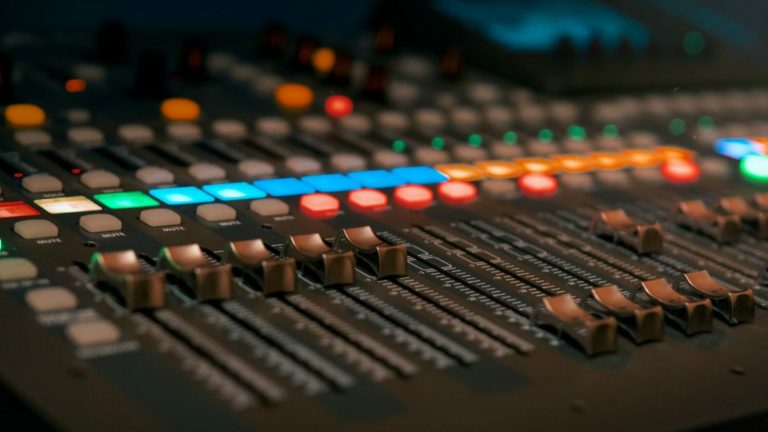
Online lecture: Cultural Heritage in the Digital Age @MJFC
The first edition of the Montreux Jazz Festival China (MJFC) will take place in Hangzhou from October 5 to 8, 2021. This new Festival will offer an eclectic program on the theme When West Meets East, combining Chinese, Asian music and jazz.
Swissnex in China, in collaboration with Zhejiang Conservatory of Music, will host an online lecture. We will invite Prof. Sarah Kenderdine to present Computational museology: interfaces to cultural big data and Dr. Alain Dufaux to talk about Montreux Jazz Archives and the associated research and innovation projects.

“Deep Fakes: Art and Its Double”: New exhibition opens at EPFL Pavilions
Artificial intelligence, computer vision, state-of-the-art imaging computer graphics, interactive and immersive media, and high-precision 3D to 5D printing technologies are revolutionising how art is conceived and created. Deep Fakes: Art and Its Double is the first exhibition to address this present revolution.
Exhibition curator and director of EPFL Pavilions, Sarah Kenderdine, has given them a name: ‘cultural deep fakes’. Through 21 installations at EPFL Pavilions, visitors are offered an exclusive encounter with an array of art works and scientific inventions, 12 of these specially commissioned for the exhibition.
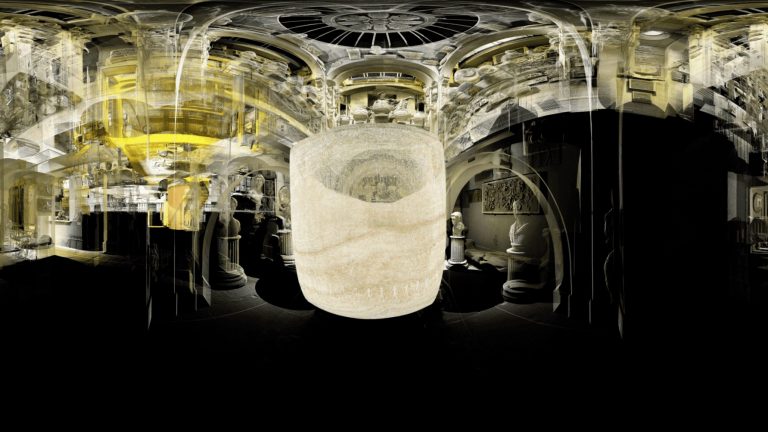
Sarah Kenderdine gives a speech for FECIT (‘Fake-It’), Photo London
FECIT – The dynamic relationship between making, preserving, and sharing
The talk will consider on the relationship between image and surface with a focus of elevated printing systems. It will reflect on different display technologies and the way they are shaping what we see, how we experience and what we create. The emergence of archives as both repositories and creative resources places stress on the quality and quantity of the data and the role of Machine Learning to help navigate and increasingly confused territory.
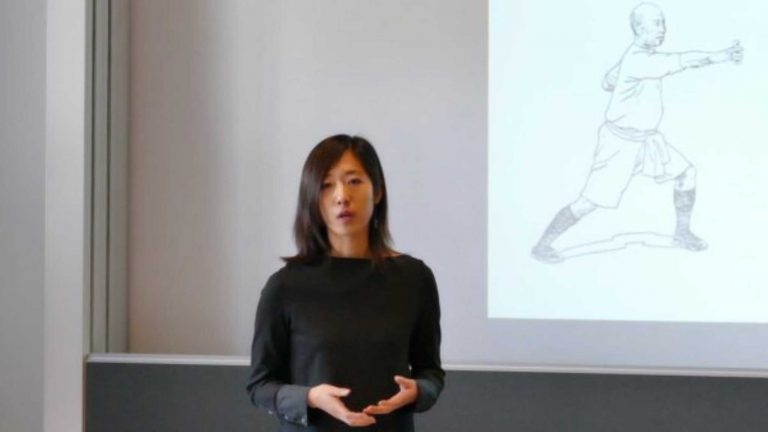
What it really means to do interdisciplinary research
On September 16th, the EPFL-UNIL Collaborative Research on Science and Society (CROSS) program hosted demonstrations of digital tools and proofs-of-concept resulting from recent mobility and digital humanities projects, as well as roundtables on the importance and challenges of supporting interdisciplinary research.
Yumeng Hou, Davide Picca, and Alessandro Adamou presented a first version of their martial arts ontology, developed as part of “CROSSINGS: computational interoperability for intangible cultural heritage”.

When art and technology intermingle, the copies are real
A portrait of Rembrandt that is not quite the same nor quite another, a real Picasso that belongs to a community of 25,000 Internet users, an interactive 3D walk on the roof of Notre-Dame de Paris drawn from Assassin’s Creed, a virtual golden calf on its pedestal or my identity impersonated by a hologram controlled by an artificial intelligence. The exhibition Deep Fakes: Art and Its Double literally immerses us in the transcendent universe of ‘cultural deep fakes’, apparent copies, assumed doubles or inspired creations, made possible by cutting-edge technologies in imaging, virtual, augmented or mixed reality, and artificial intelligence.
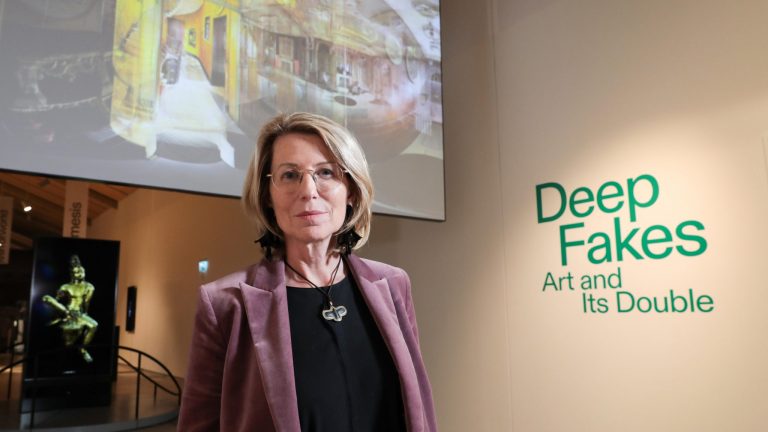
e-flux Announcements: “Deep Fakes: Art and Its Double”
Deep Fakes: Art and Its Double poses crucial questions about the potency of digital replicas to absorb audiences in enduring emotional encounters with universal art treasures. This exhibition opposes the use of “deepfakes” for manipulation and misinformation, to explore very different perspectives, reimagining objects through advanced computational techniques. Decades of computer science and engineering have revolutionized the tenets of verisimilitude and representation.
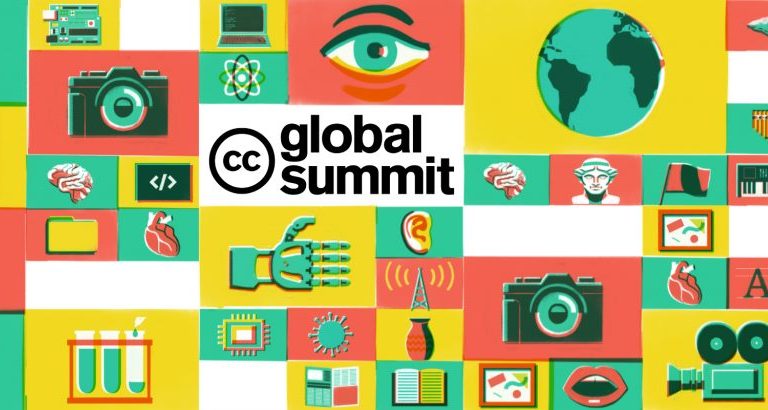
Panel speech by Sarah Kenderdine at CC Global Summit
Legal and Ethical Challenges to Sharing and Using GLAM Collections
Developments in artificial intelligence present exciting opportunities for GLAMs. While these opportunities are likely to propel GLAMs forward through their digital transformation, they also raise questions in the area of copyright, ethics, privacy and data protection that need to be clarified.
To analyze these issues, an interdisciplinary panel of legal and digital humanities experts, designers and computer scientists will discuss to what extent AI can be used in the GLAM sector to generate benefits in the public interest and how sustainable, ethical and prosocial uses can be developed.
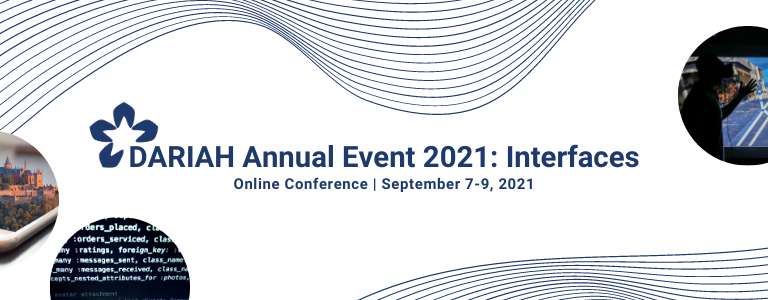
Sarah Kenderdine keynote speaker at DARIAH 2021
Computational Museology: Experimental Interfaces to Cultural (Big) Data
This presentation explores how such a mechanistic description can be replaced by ways in which computation has become ‘experiential, spatial and materialized; embedded and embodied’. The title references a framework at eM+ based on ‘whole of environment’ encoding. Such a scaffold unites artificial intelligence with data curation, ontology with visualization, and communities of publics and practitioners with embodied participation through immersive and interactive interfaces.
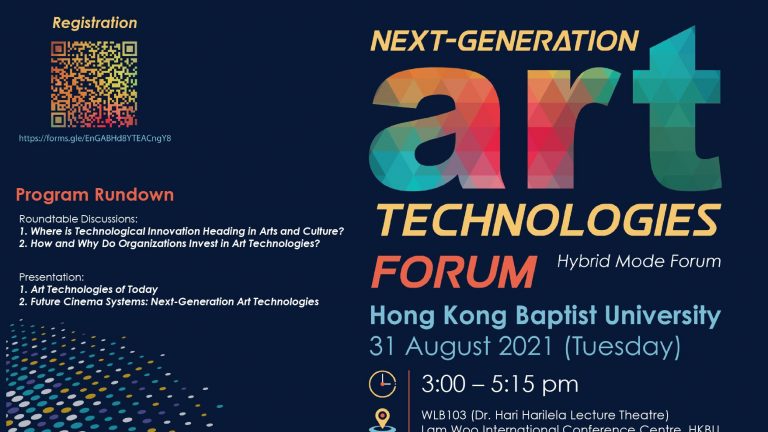
Future Cinema Systems: Next-generation Art Technologies
Prof Sarah Kenderdine gives a speech on Future Cinema Systems at the Next-generation Art Technologies Forum, hosted by Hong Kung Baptist University. Several topics were also discussed during the forum, e.g., Where is Technological Innovation Heading in Arts and Culture? How and Why Do Organizations Invest in Art Technologies?
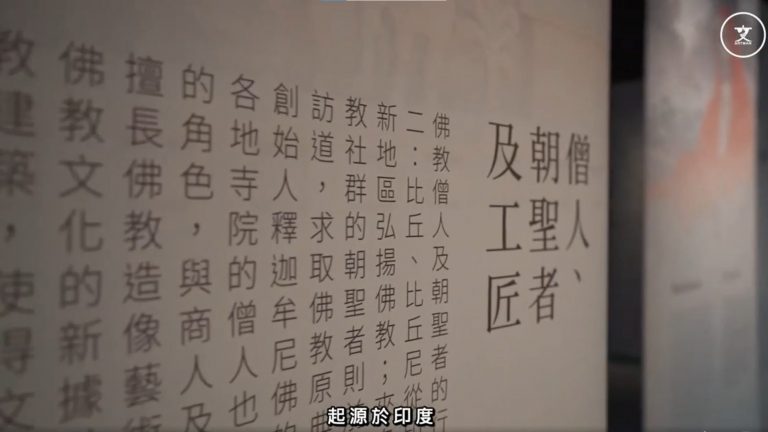
Artman Interview with Prof Jeffrey Shaw and Prof Sarah Kenderdine
The exhibition Atlas of Maritime Buddhism combines virtual and physical experience in narrating the historical spread of Buddhism from India to Korea through the seaports of Southeast Asia. In the recent Artman’s interview with the curators of this exhibition, Prof Jeffrey Shaw and Prof Sarah Kenderdine reflected on how new technologies have transformed the documentation of cultures and narratives in the museums.

Sarah Kenderdine uses data science to enrich the cultural experience
The EPFL professor, originally from New Zealand, is a renowned expert in experimental museology and maritime archeology. She employs data-science technology to help bring our cultural heritage to life.
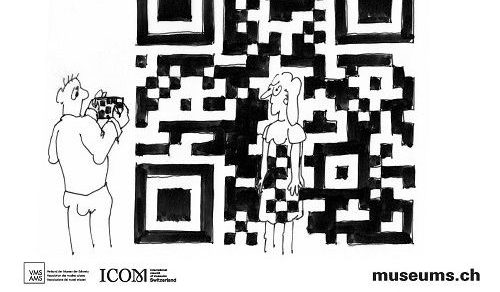
Sarah Kenderdine keynote speaker at the annual congress of Swiss museums
Digital Museology: building interfaces to cultural knowledge
This year’s annual congress of the Swiss museums will take place on August 26th and 27th, with a focus on the «Real and digital – strategies for the future of the museum». The corona crisis led to robust development in the museums’ digital presence. After the initial euphoria, disillusionment gradually spreads – many questions about digitization remain unanswered.
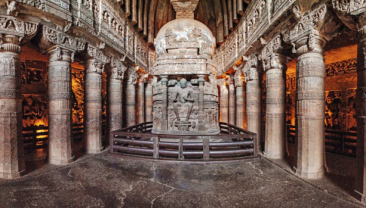
The Buddha at Sea: Atlas of Maritime Buddhism and New Experiences in Museology
Atlas of Maritime Buddhism is a visually attractive and finely presented exhibition, curating a historically sound and inspiring narrative about the “Great Circle” of Buddhism’s spread around Asia in the early centuries of its development, and is supplemented by new media art. Prof. Jeffrey Shaw, Yeung Kin Man Chair Professor of Media Art at City University, is one of the chief curators alongside Prof. Sarah Kenderdine, Professor of Digital Museology at the École polytechnique fédérale de Lausanne. Ven. Ru Chang of Fo Guang Shan and Dr. Marnie Feneley are the other co-curators, with Dr. Isabelle Frank the associate curator.
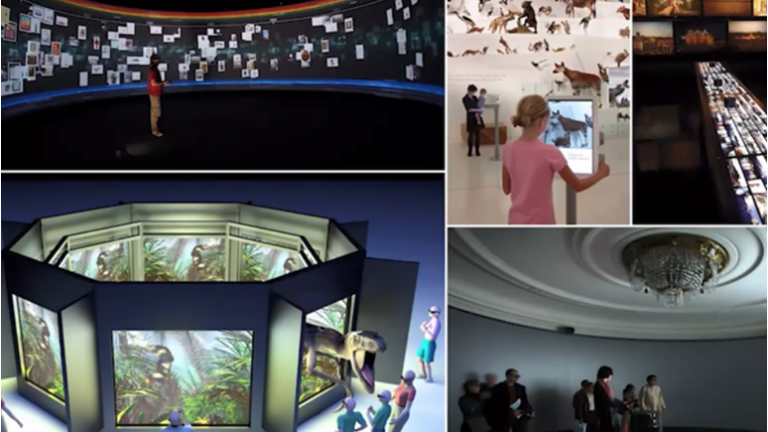
Reconstructing narratives in the digital age | Dialogue with Sarah Kenderdine
The China-Europe-America Museums Cooperation Initiative aims to promote transnational cooperation between museums in the future. The Initiative invites museum professionals to reflect on how museums can develop with the help of technologies. During the Session “Museums + Cyberspace: remaining”, Professor Sarah Kenderdine discussed the core topic of digital transformation and the unprecedented contributions of technologies to the research and protection of cultural heritage.
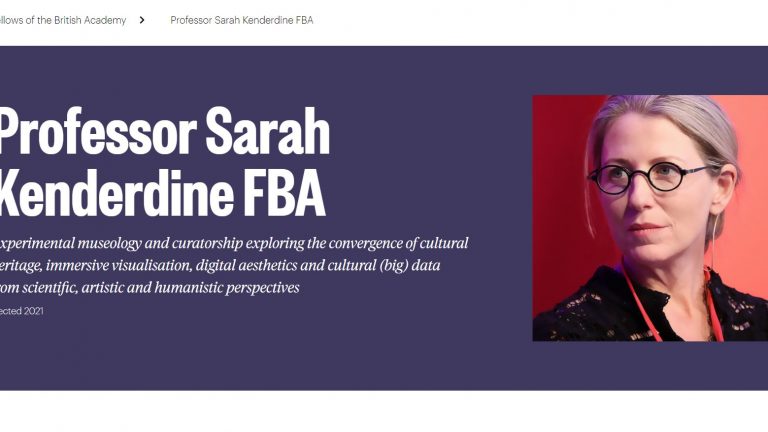
Professor Sarah Kenderdine elected as a Corresponding Fellow of the British Academy
The British Academy has elected Professor Sarah Kenderdine as a new Corresponding Fellow in recognition of her outstanding contributions to the SHAPE subjects – the social sciences, humanities and the arts.
Founded in 1902, the British Academy is the UK’s national academy for the humanities and social sciences. It is a Fellowship of over 1400 of the leading minds in these subjects from the UK and overseas. Besides Kenderdine, 52 Fellows were elected from UK universities, with a further 29 Corresponding Fellows elected from universities in 15 countries.
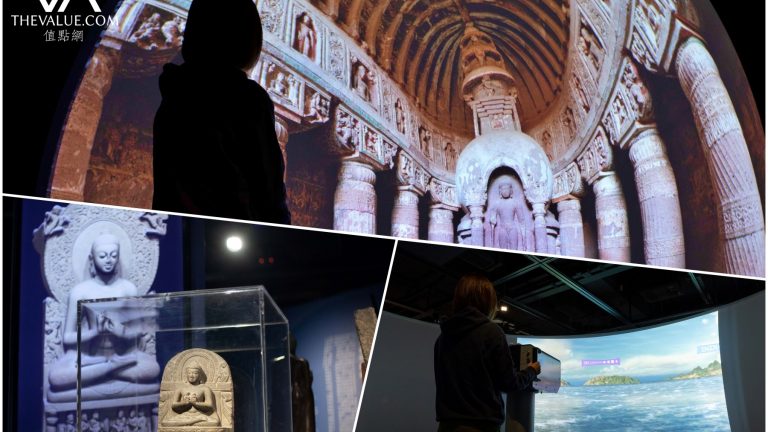
Sailing the Seas: CityU’s Gallery paints rare story of Maritime Silk Road
The Land Silk Route is a popular topic in museum and gallery exhibitions. We often see depiction of Dunhuang Cave Paintings, one of the pinnacles of cross-culture artistic interactions and spread of Buddhism across the Land Silk Route. Indra and Harry Banga Gallery at Hong Kong’s City University wants to change this trend and highlight the Maritime Silk Route with their current exhibition, Atlas of Maritime Buddhism.
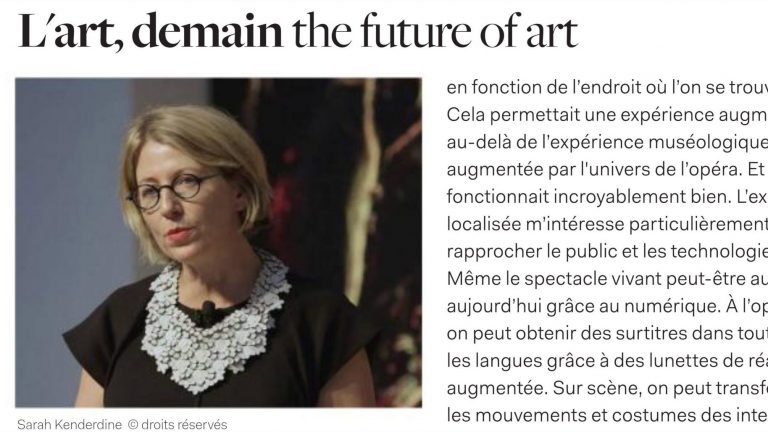
Sarah Kenderdine gives a speech at the Verbier Festival
L’art, demain the future of art
le Quotidien N° 3 | Jul 17, 2021
While technology is now everywhere in our lives, it is also transforming the way we approach art and culture. To better understand art and find new ways to explore it, the speakers at this conference present their research, their visions and their exciting innovations.

World premiere exhibition “Buddhist Maritime Silk Road: new Media Art Exhibition”
With great anticipation, the Laboratory is delighted to announce the permanent exhibition in Fo Guan Shan Monastery Taiwan, of The Atlas of Maritime Buddhism research project led by Sarah Kenderdine, completed after 6 years, in this world premiere: Buddhist Maritime Silk Road: new Media Art Exhibition.
Click here to download the brochure.
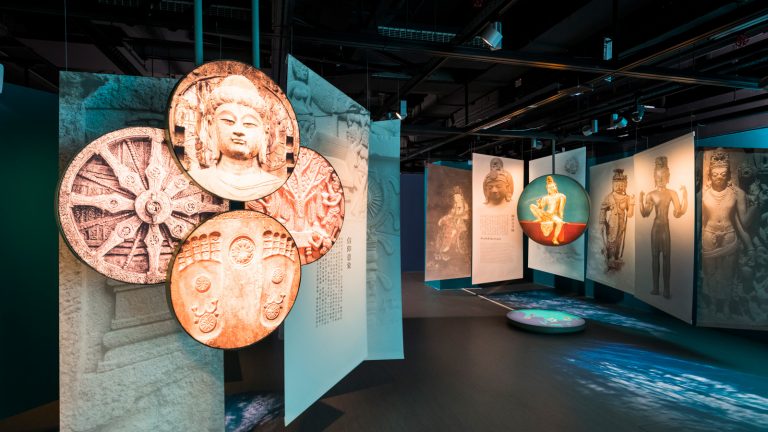
New exhibition spotlights diffusion of Buddhism along Maritime Silk Road
As the first of a world touring series, the Laboratory is pleased to announce the launch of the Atlas of Maritime Buddhism exhibition at The Harry and Banga Gallery of City University of Hong Kong (CityU).
A 300-page catalogue is available upon request. To this end, please write an email to Prof. Sarah Kenderdine.
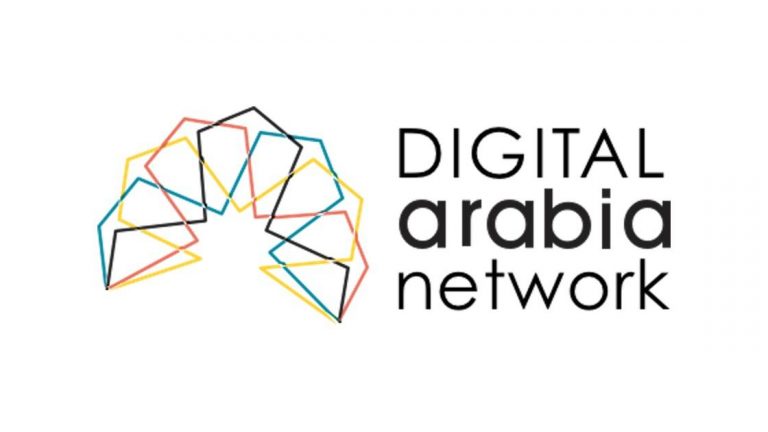
Speech by Prof Sarah Kenderdine at Rakameya 2021, a conference for digital transformation in the MENA
Experimental Museology
Culture and digital transformation are evolving in parallel? It’s time to overcome the dichotomy and skepticism around the intersection between the two! This collaborative session “The Role of Culture and Museums in the Digital Transformation of MENA Region” will discuss how concepts of culture and cultural institutions are being used to explain, assimilate, and utilize technology to achieve social and economic goals in the Arab World. The session will cover important topics such as museums as places for change, digitization strategies for protecting artifacts, and the role of AI for the arts, and involve prominent professionals from the field.
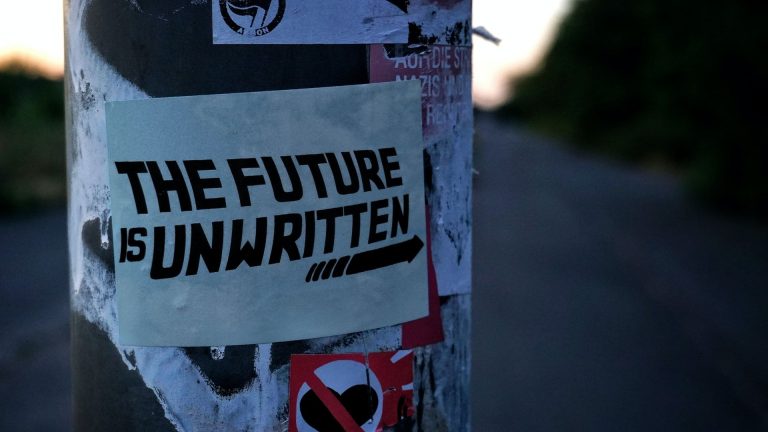
Prof Sarah Kenderdine and Yumeng Hou presented their research at DH-CH 2021
Digital Images, Metadata and Cultural Heritage Objects
Metadata and semantic information are crucial for most operations with data. Enriching images with words and words with images is more important than ever. This can be demonstrated particularly well by the research on cultural heritage, as important sources of great importance for our social and cultural identity. The change towards digital methods and tools is essential in this context in several ways since the form of capturing technology as well as the visualization of content changed greatly with the advent of the digital.
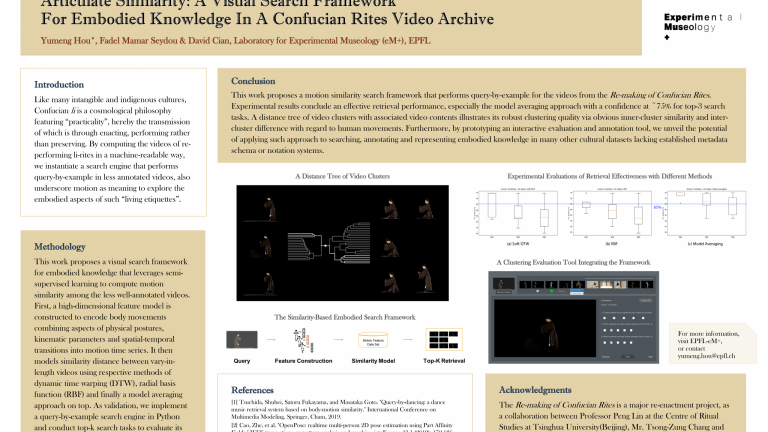
Poster presented at the 16th International Digital Curation Conference (IDCC 21)
Yumeng Hou, a PhD student at the Laboratory for Experimental Museology (eM+) presented a research poster: “Articulate Similarity: A Visual Search Framework For Embodied Knowledge In A Confucian Rites Video Archive” at the 16th International Digital Curation Conference (IDCC 21).
This work is collaborated by Yumeng Hou, Fadel Mamar Seydou and David Cian, under the supervision of Prof Sarah Kenderdine.
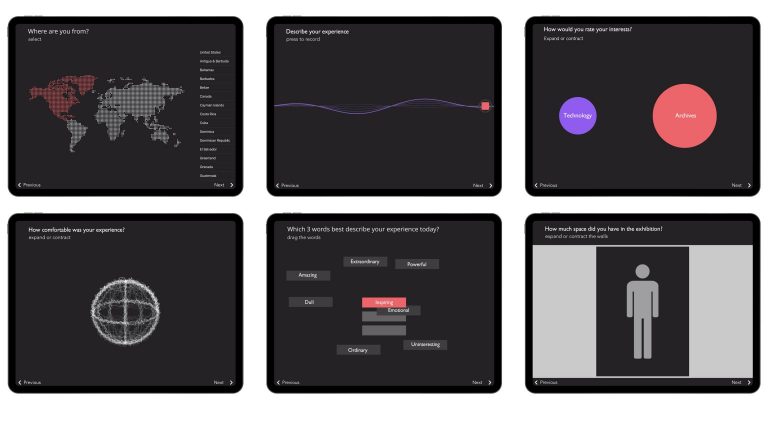
Innovative audience research method gives voice to museum visitors
Enter muse, an innovative feedback tool created to enable museums to understand their visitors better. muse has been co-developed by Deakin University’s Applied Artificial Intelligence Institute (A2I2) along with staff at the Laboratory for Experimental Museology (eM+), École Polytechnique Fédérale de Lausanne (EPFL) in Switzerland.
“muse differs from traditional surveys in that it is designed to engage visitors whilst passing through an exhibition. This means people record their experiences in real time, offering richer insights for museum operators. “
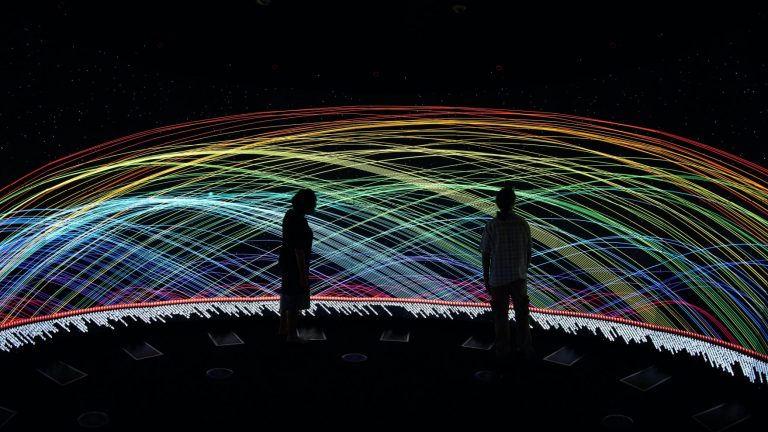
New high-performance computing hub aims to harness the sun’s energy
EUROfusion – or the European Consortium for the Development of Fusion Energy, which consists of organizations from 28 European countries – has just selected EPFL as the site for its Advanced Computing Hub. This research hub will be led by the Swiss Plasma Center and bring together a diverse group of scientists from EPFL’s Institute of Mathematics, SCITAS (which houses a high-performance scientific computing platform), Swiss Data Science Center (a national center of excellence in big data), and Laboratory for Experimental Museology (eM+). These experts will provide scientific and technical support as well as supercomputing capacity to European researchers working in the field of fusion power.
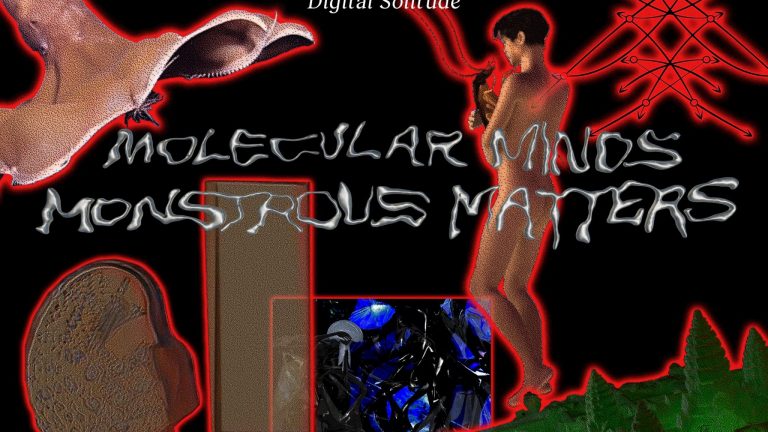
Nora Al-Badri is exhibiting at »Molecular Minds // Monstrous Matters«
The online exhibition Molecular Minds // Monstrous Matters brings together the works of six artists and former Akademie Schloss Solitude fellows. Their contributions question and critically engage with heteronormative worldviews around consciousness research, machine learning, artificial intelligence, and self-experience. The artists probe the power of a collective intelligence that reaches from the enhanced to the monstrous, the ancestral to the futurist, the molecular to the planetary, and from the human to the non-human.
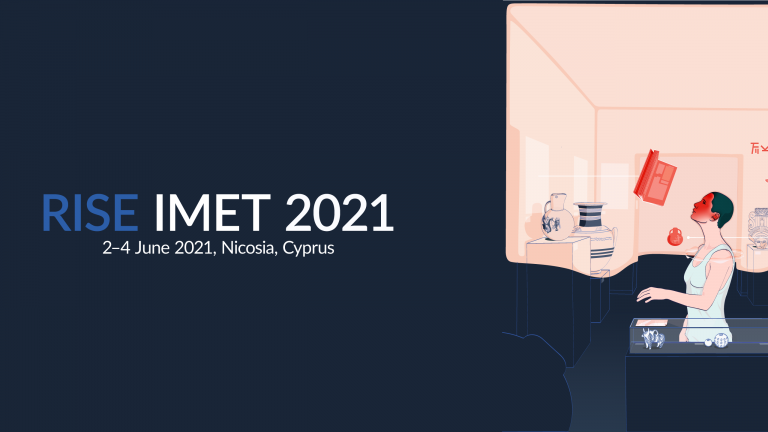
Computational museology: “whole of environment” encoding
Prof Sarah Kenderdine gives a keynote speech at the International Conference on Emerging Technologies and the Digital Transformation of Museums and Heritage Sites, held in Nicosia, Cyprus. The conference aims to promote critical and interdisciplinary approaches and conversations between participants from diverse fields and to encourage interdisciplinary dialogue between academics and professionals from various backgrounds on digital advances, innovation and their impact on the field of cultural heritage.
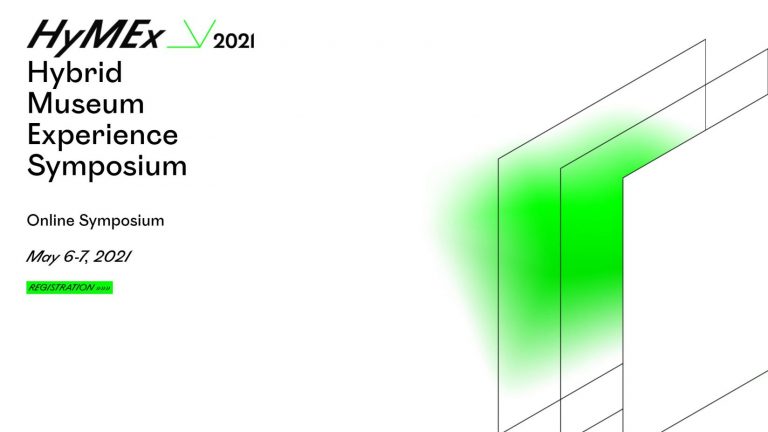
Inhabited Information Spaces: a “Landscapes for the Senses” – speech at HyMEx 2021
At the intersection of immersive visualisation technologies, visual analytics, aesthetics, and cultural (big) data, this presentation explores diverse digital cultural heritage experiences of diverse archives from scientific, artistic and humanistic perspectives. Exploiting a series of experimental and embodied platforms, the discussion argues for a reformulation of engagement with digital archives at the intersection of the tangible and intangible and as a convergence across domains.

Neuvue video podcast with David Torcasso
Sarah Kenderdine is Professor of Digital Museology at EPFL in Lausanne, brings UNESCO World Heritage Sites to life around the world thanks to digital technologies and runs a laboratory for experimental museology. In addition, she has curated over 100 exhibitions for museums and galleries. // Video podcast produced by Tablecast / Christoph Soltmannowski.
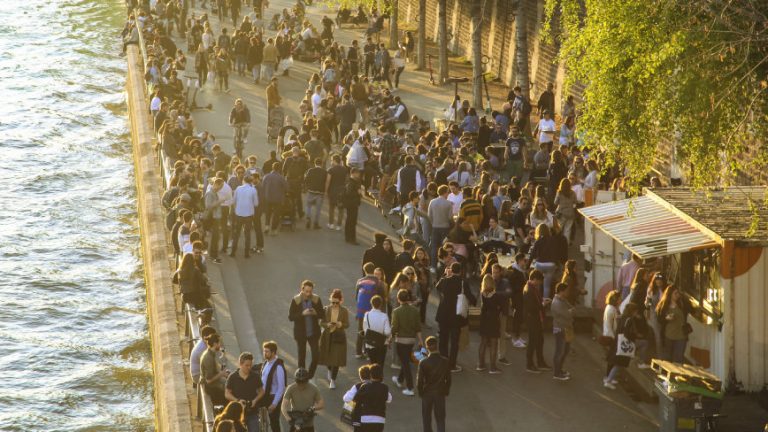
Sarah Kenderdine invited to talk at the 17th European Trend Day
Physical proximity is now risky. The consequences are reverberating through countless industries, from catering to tourism and trade fairs to universities, through to the entertainment sector with its sporting events, cinemas and parties. At the 17th European Trend Day, we will present the most remarkable developments and gauge how and where we will meet up in future.
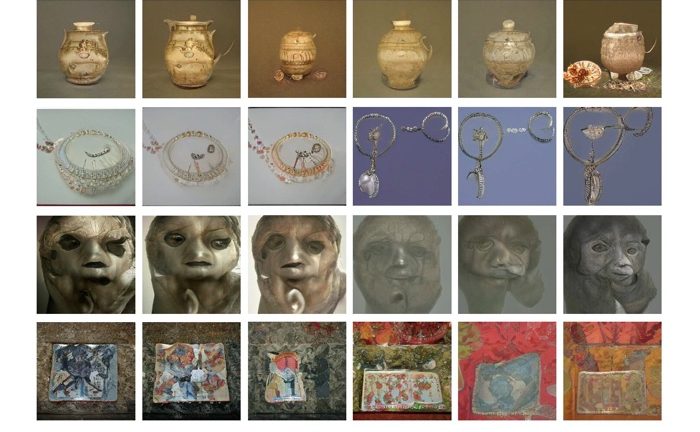
Using AI to question the power structures of Western museums. Interview with Nora Al-Badri
Regine | January 20, 2021
Nora Al-Badri‘s most recent research projects apply GANs to images of archaeological artifacts in order to continue her questioning of the institutional power structures of Western museums. What make her works -and the one she has developed in collaboration with Nikolai Nelles– so compelling is that they go beyond confronting the audience with uncomfortable ethical questions about the full history of museum collections. They also present new platforms for public discussions, new counter-narratives and new emancipatory strategies to examine issues of decolonisation.
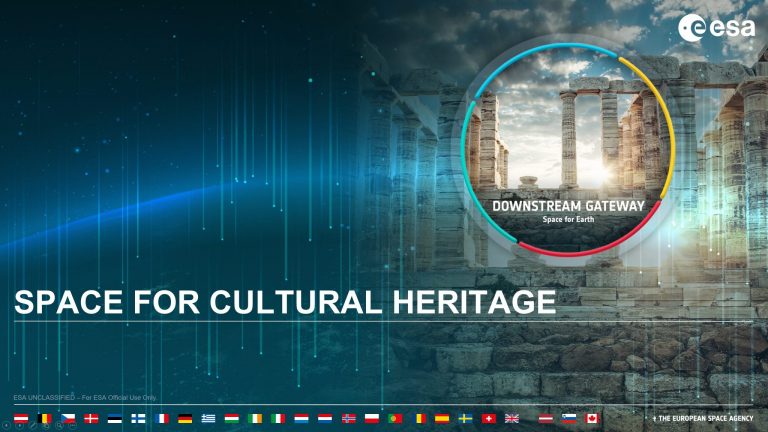
Prof Sarah Kenderdine will give a speech at the ESA workshop “Space for Cultural Heritage”
Space for Cultural Heritage
Several factors, both natural and anthropic ones, endanger nowadays our cultural heritage: subsidence, ground motion, pollution, looting, collateral damages and intentional attacks. Data provided by the European Space Agency Copernicus fleet of satellites and other cutting edge technologies leveraging on artificial intelligence and machine learning can help better assessing the risk and preserving sites at risk.
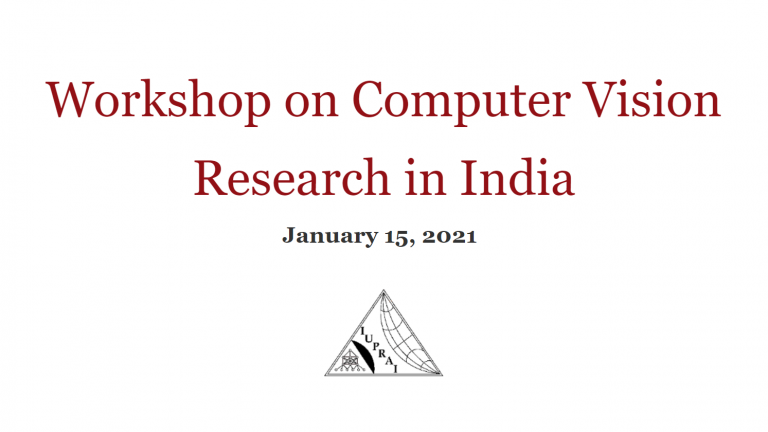
Prof Sarah Kenderdine: Invited speaker at Workshop on Computer Vision Research in India
January 15, 2021
Indian computer vision research community has been experiencing almost an explosion of research activities in this field during last three decades with applications to various domains ranging from biomedical to digital heritage, from resource management to Indian language OCR, and so on. This event provides a platform to bring together Indian experts as well as young researchers to share their experience and exchange opinion.
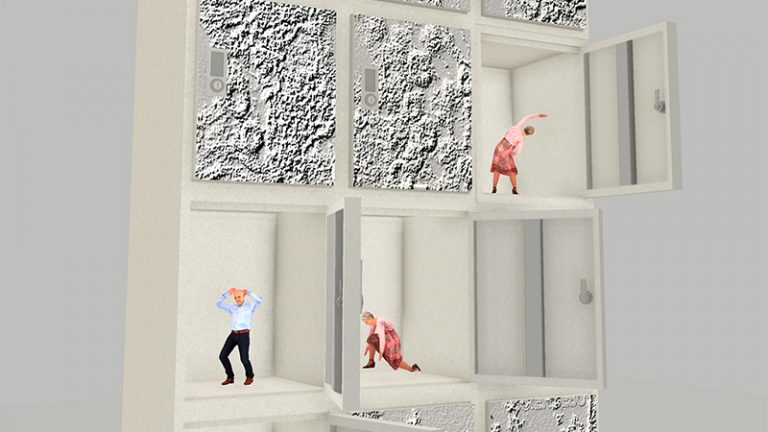
SAFE HOUSE: New Installation Exhibited In “Art Machines”
Safe House takes the form of a locker cabinet whose doors can be virtually opened using an iPad. Each of these lockers displays an individual male or female figure, repetitively performing disparate acts of physical exertion. This scenography evokes the enforced social isolation under the sign of Covid-19, where living is being pataphysically performed within the radius of impounding threat.

Artwork Displayed At The Projection Triennial, “lichtsicht 7”
Bad Rothenfelde, Germany | October 22, 2020
The third projection on this wall is fascinating other reasons. It comes from the media art Pioneer Jeffrey Shaw (born 1944, AUS), Sarah Kenderdine (Prof. Digital Museology, Lausanne born 1966). Following the first Version of “Fall Again, Fall Better” (2012), the second version includes a total of twenty groups of people on the computer modeled human figures fall like simple toy thread figures gradually in together, a domino-like falling over them entire projection screen.
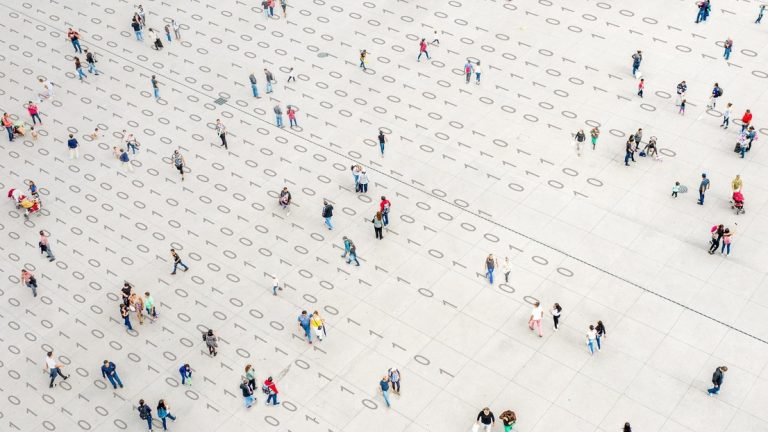
eM+ receives grants from the CROSS program
The Collaborative Research on Science and Society (CROSS) program in EPFL’s College of Humanities (CDH) is pleased to announce that it will fund four research projects for the year 2021, all on the theme of digital humanities.
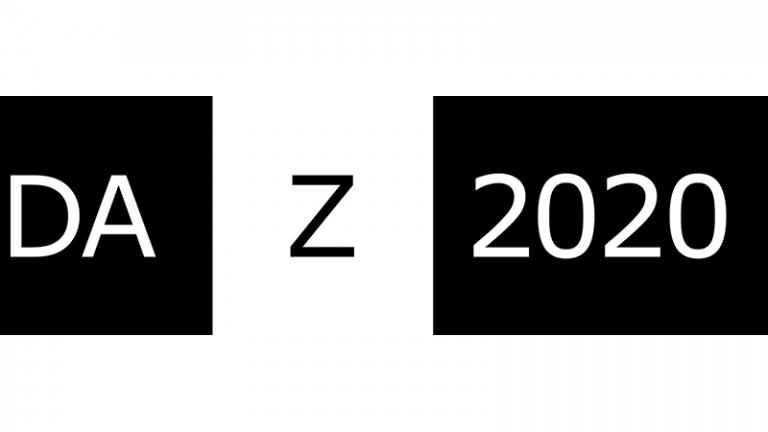
Sarah Kenderdine Invited Speaker at DA Z
Art Future Wars – The culture war between Analogue- and Digital Art
Sarah Kenderdine researches at the forefront of interactive and immersive experiences, amalgamating tangible and intangible cultural heritage with new media art practice, especially in the realms of interactive cinema, augmented reality and embodied narrative.

Sarah Kenderdine keynote speaker at Innovative Strategies For Digital Museology
Designed in collaboration with Virtual Switzerland, the Innovative Strategies for Digital Museology program aims to foster exchanges between the field of new technologies, creative industries, academia and museum institutions in order to meet the specific needs of the latter in terms of digital innovation.
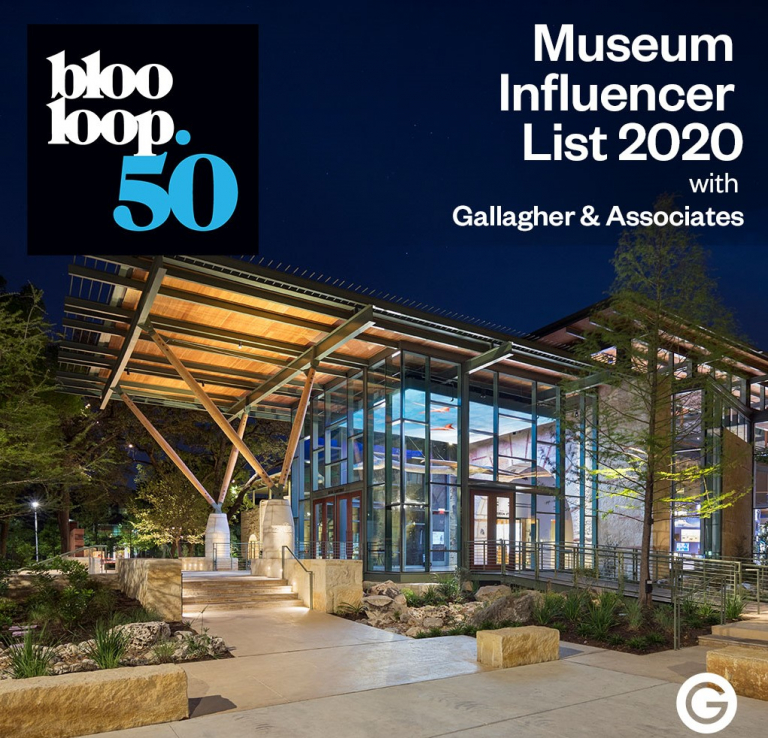
Blooloop 50 Museum Influencer List 2020 – The Power 10: Sarah Kenderdine
Professor Sarah Kenderdine researches at the forefront of interactive and immersive experiences for museums, galleries, libraries and archives. Considered a pioneer in the fields of digital heritage and digital museology, Kenderdine is a regular keynote speaker at related forums internationally, including the World Economic Forum.

Digital Shapers 2020: Sarah Kenderdine [creatives]
For the fifth time, BILANZ, in cooperation with Handelszeitung and Le Temps, has chosen the 100 most important people in Switzerland who are driving digitization in the country. They are digital pioneers, data enthusiasts, and digital visionaries who cover everything from support ecosystems for startups to innovative healthcare solutions to digital tools for advancing education, manufacturing, and technology.

IASTE 2020 DISRUPTIVE TRADITIONS: THE PANDEMIC AND ITS IMPACT
Sarah Kenderdine, head of the Laboratory for Experimental Museology (eM+) joins key speakers for this IASTE event as part of 17th Biennial Conference of the International Association for the Study of Traditional Environments (IASTE)

Art x Science Dialogues: Sarah Kenderdine talks at SwissNex Shanghai
Bridging the Future – New Interdisciplinary Initiatives: In recent years, collaborations between artists and scientists have increasingly become a feature of the cultural landscape. In the final edition of the Art x Science Dialogues series, we will introduce the interdisciplinary initiatives from the two top Swiss universities – ETH Zurich and École polytechnique fédérale de Lausanne (EPFL), as well as the art-science practices of the Central Academy of Fine Arts (CAFA) from China.
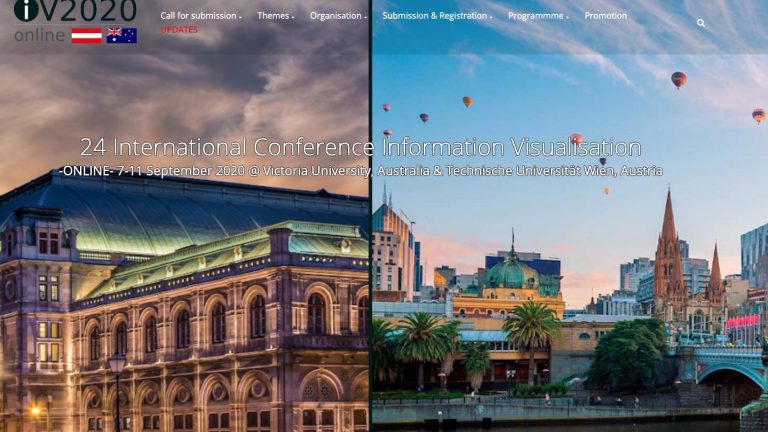
iV2020 Keynote: “Inhabited information spaces: a landscape for the senses”
Sarah Kenderdine, head of the Laboratory for Experimental Museology (eM+) gives a keynote lecture at the 24 International Conference Information Visualisation (iV2020)
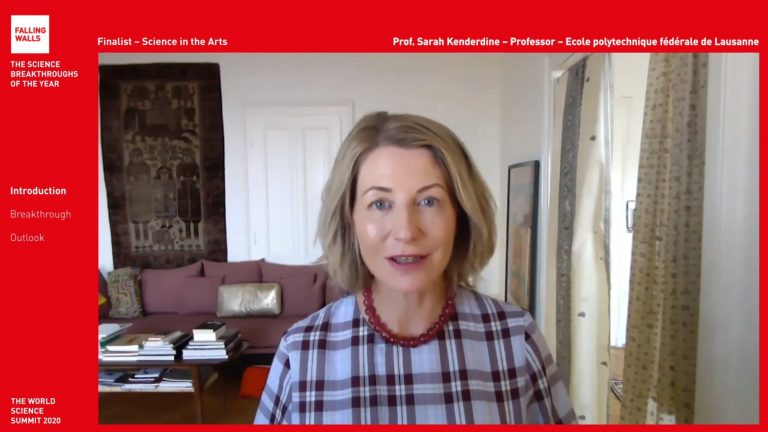
Sarah Kenderdine selected as finalist for The Science Breakthroughs Of The Year 2020
Breaking The Wall To Experimental Museology

Data-driven app brings “voice of the visitor” to museum experiences
EPFL’s Laboratory for Experimental Museology (eM+), led by Sarah Kenderdine, has received support from Engagement Migros to produce muse, a pioneering audience evaluation app, in collaboration with over 20 Swiss museums. The tool provides visitors with an engaging way to communicate their experiences, while helping museums to consider this feedback when developing exhibits and other attractions.
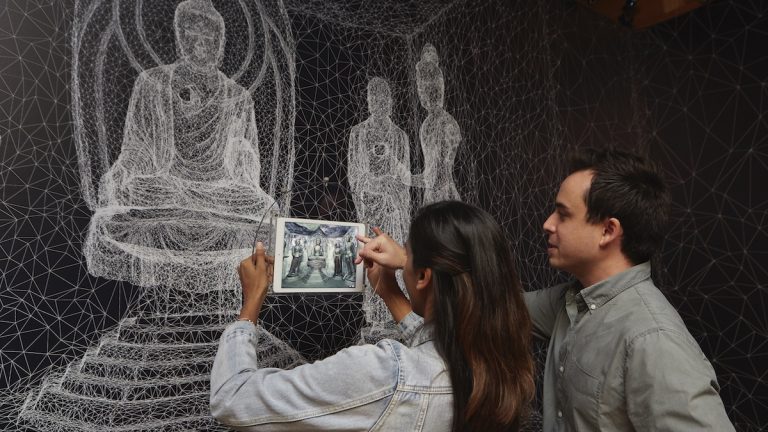
Art over Lunch: Is the Future of Art Virtual? by Asia Society Switzerland
Sarah Kenderdine In Conversation with Annette Bhagwati, Director of the Museum Rietberg. With the coronavirus outbreak the need for digital and virtual art experiences has risen. Museums have been closed, instead virtual art tours and online exhibitions have been offered by many – including by us as part of our Art over Lunch series. But the impact of modern technologies on exhibitions and artworks did not just begin now.
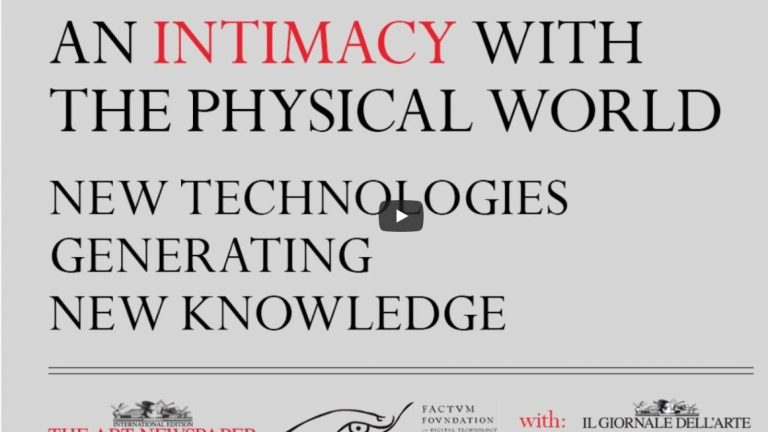
An intimacy with the physical world: new technologies generating new knowledge
Sarah Kenderdine, head of the Laboratory for Experimental Museology (eM+), and Frédéric Kaplan, head of the Digital Humanities Lab (DHLab), will participate in the 3-part series, “New Technologies and the Preservation of Cultural Heritage”, organized by the Art Newspaper and Factum Foundation, with Il Giornale Dell’Arte.
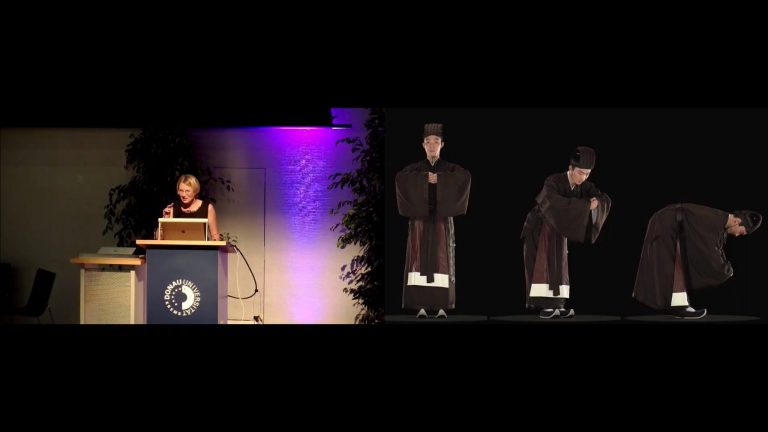
Sarah Kenderdine keynote at the Research Summit, Danube University Krems
Experimental Museology – Sculpting Cultural Data
Keynote at the Research Summit “Making Digital Heritage Multisensory”, on Sep 4th, 2019, organized by the Department for Image Science, Danube University Krems.
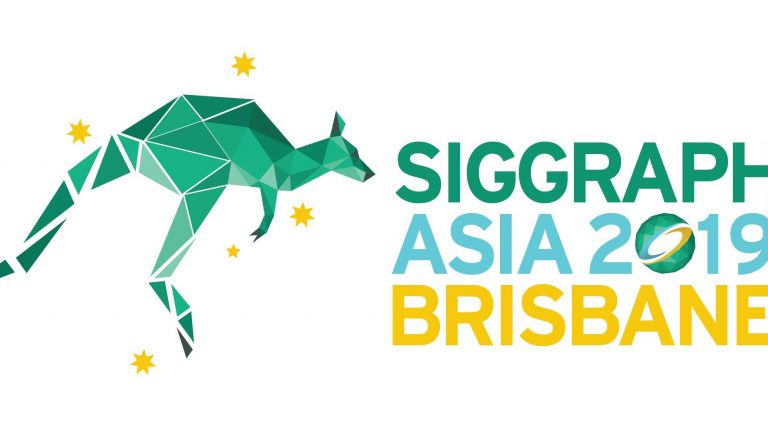
Prof. Sarah Kenderdine Chair of Siggraph Asia – Art Gallery and Art Papers.
Deep Dreaming: Art, AI & Algorithmic Beauty
The 12th ACM SIGGRAPH Conference and Exhibition on Computer Graphics and Interactive Techniques in Asia will be held in Brisbane, 17-20 November 2019.
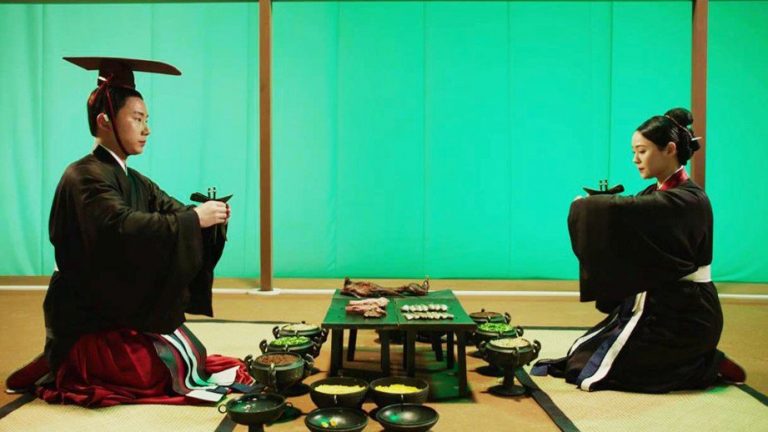
China’s ancient rituals brought to life by video project hoping to educate next generation and foreigners
South China Morning | August 6, 2019
History professor Peng Lin is on a mission to celebrate ancient Chinese values and rituals from the Zhou dynasty’s Book of Etiquette and Ceremonial
In his latest video project, he plans to film all 17 classic rites from the historic book with the help of more than 100 actors
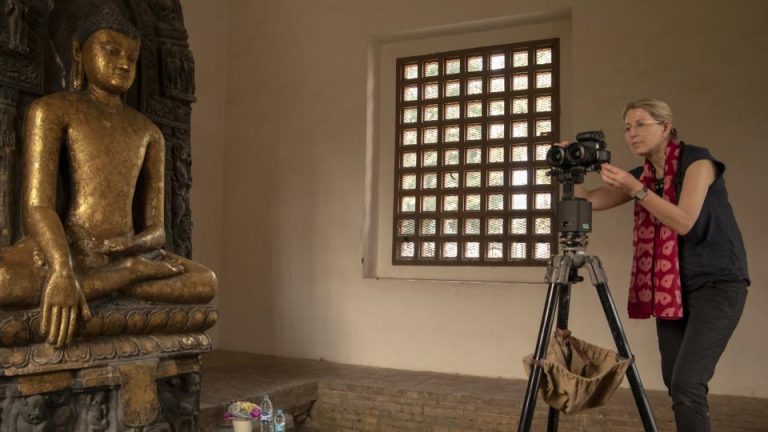
An atlas mapping the history of maritime Buddhism
Hindustan Times | Nov 23, 2018
Over the last few weeks, Professor Sarah Kenderdine, has been visiting remote places across Madhya Pradesh, Pune, and Aurangabad, clicking photos and doing research for a one-of-a-kind multimedia atlas of maritime Buddhism.
